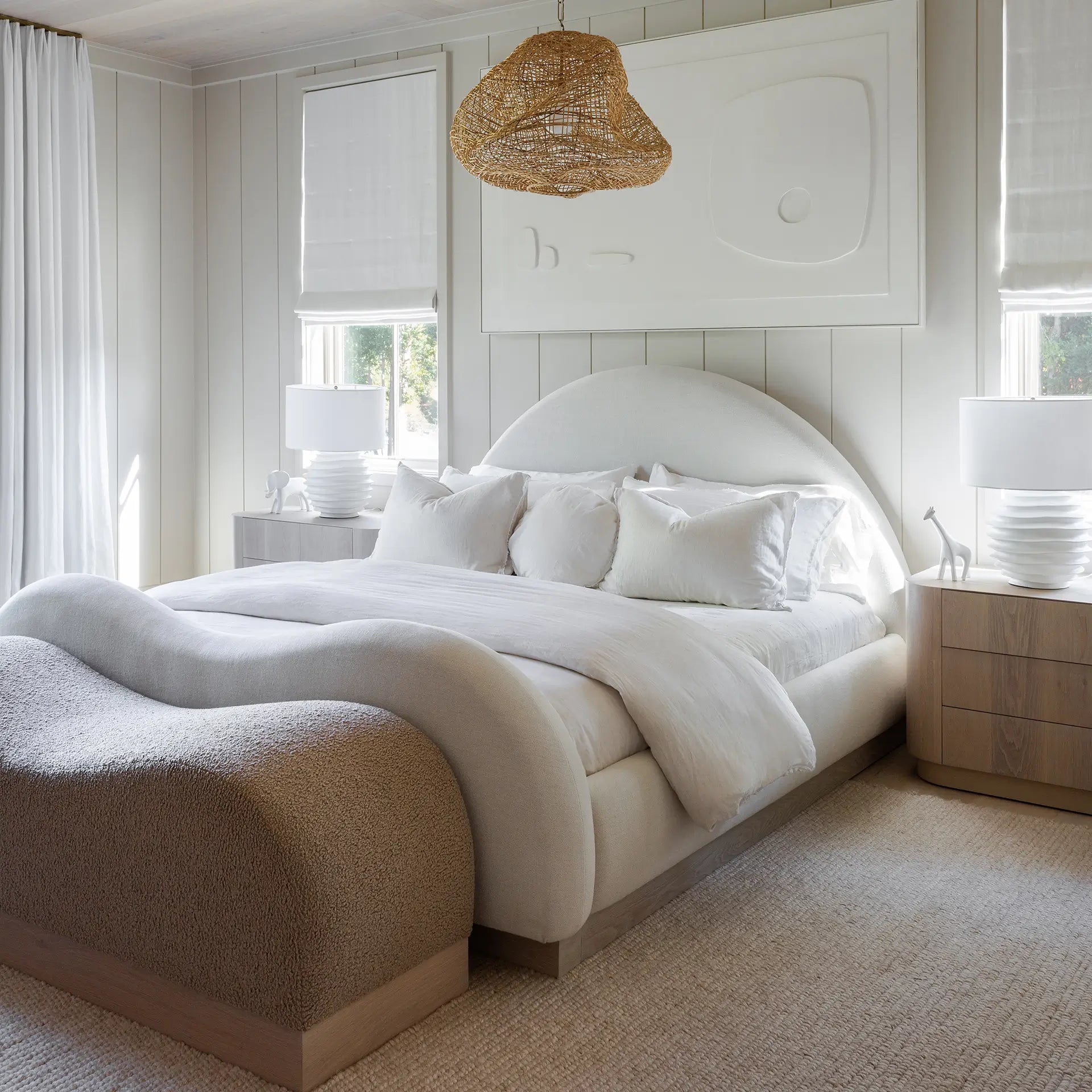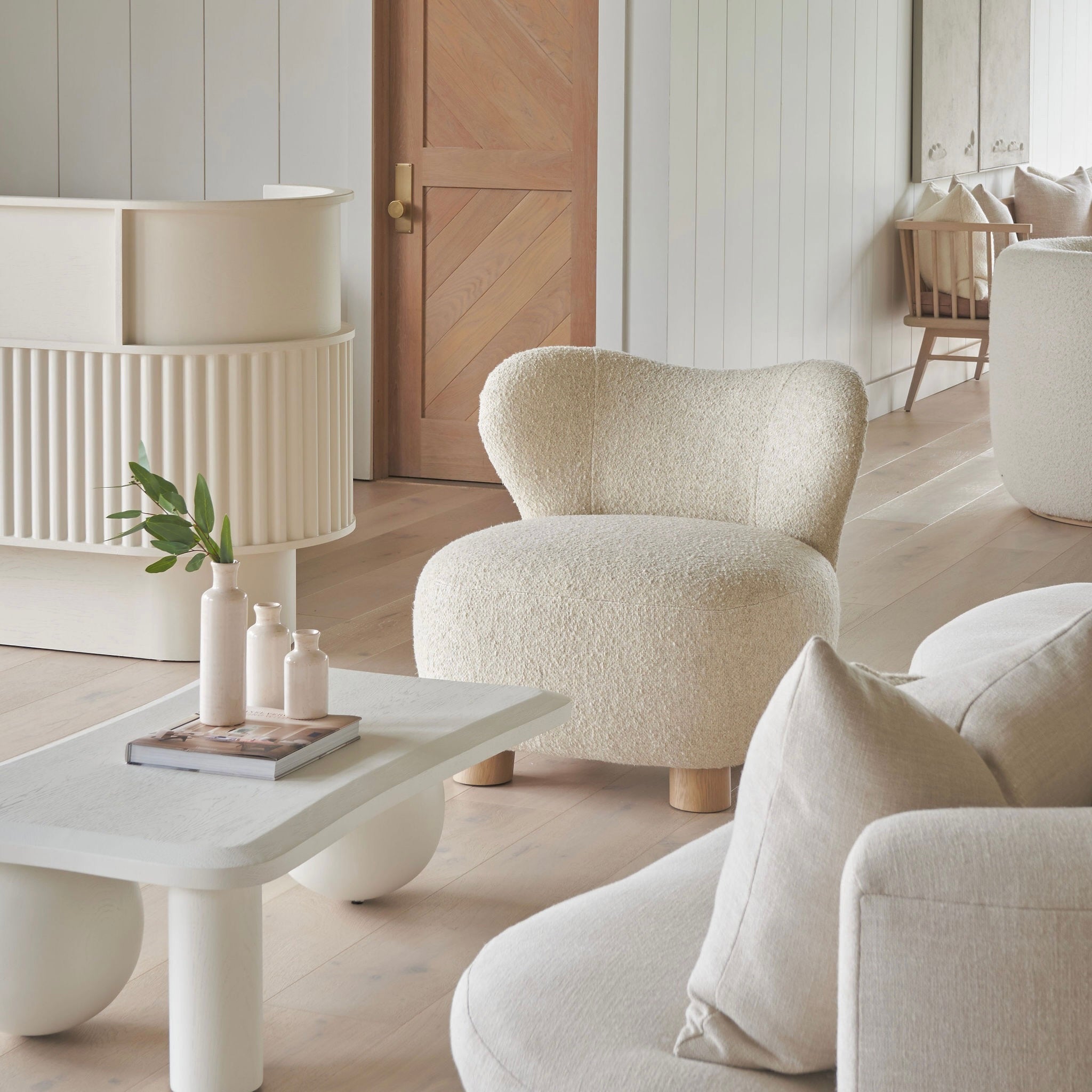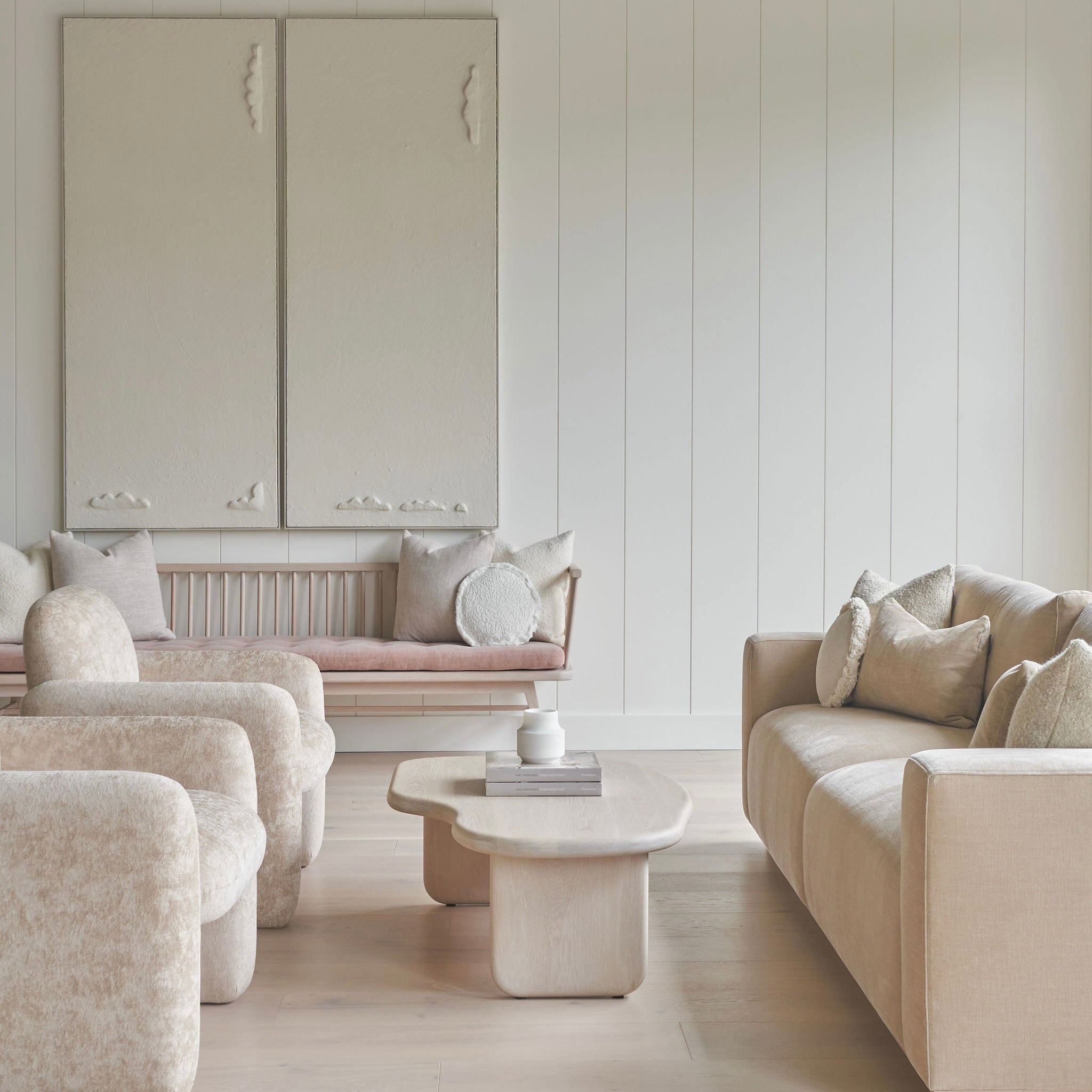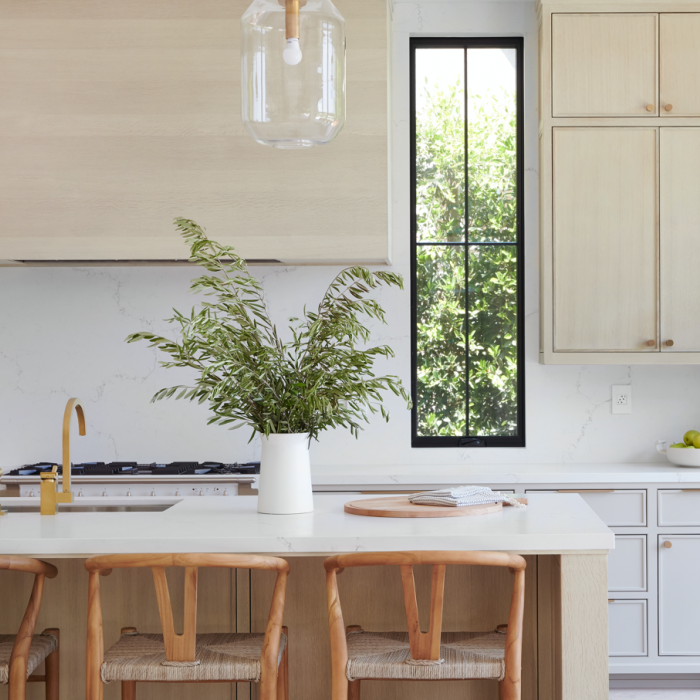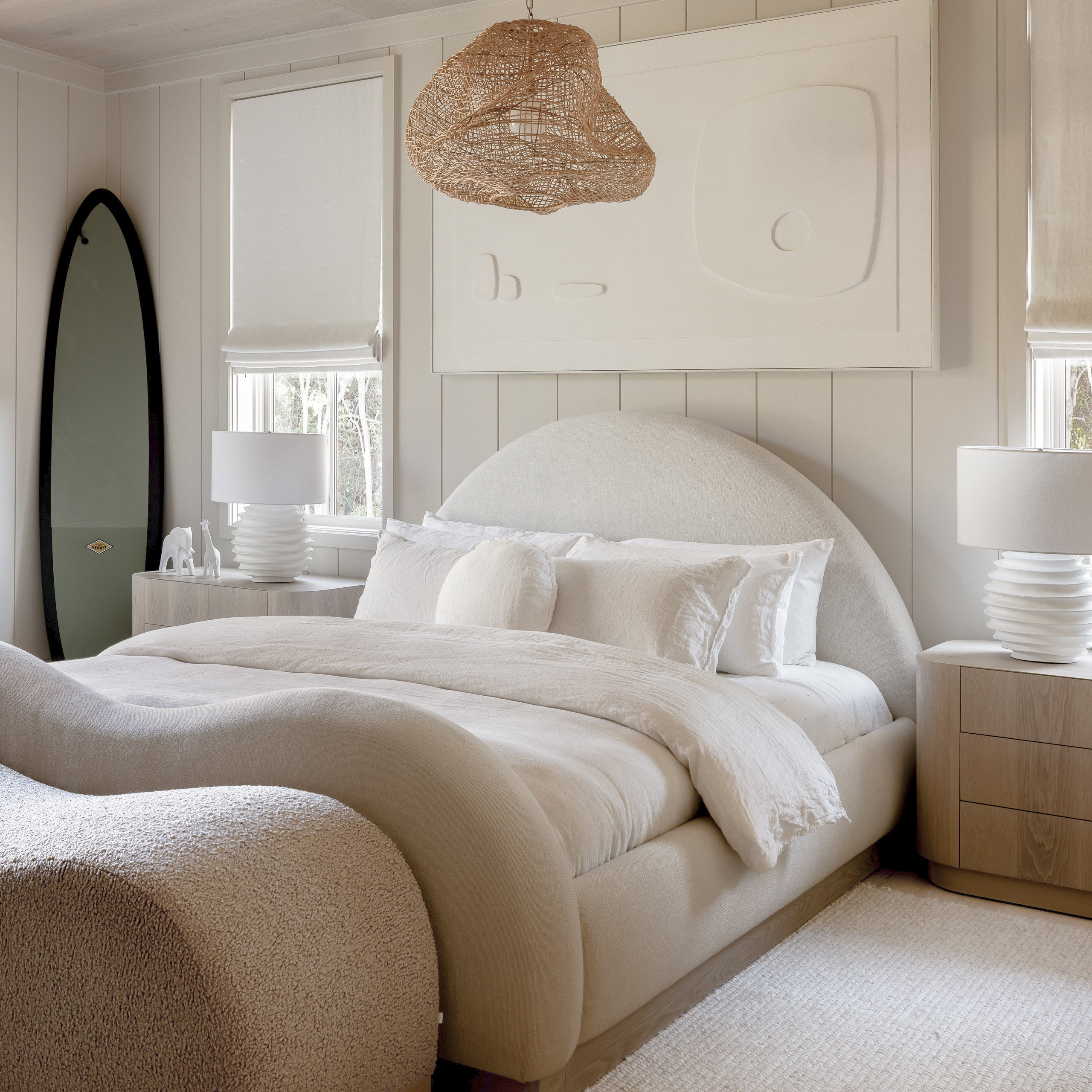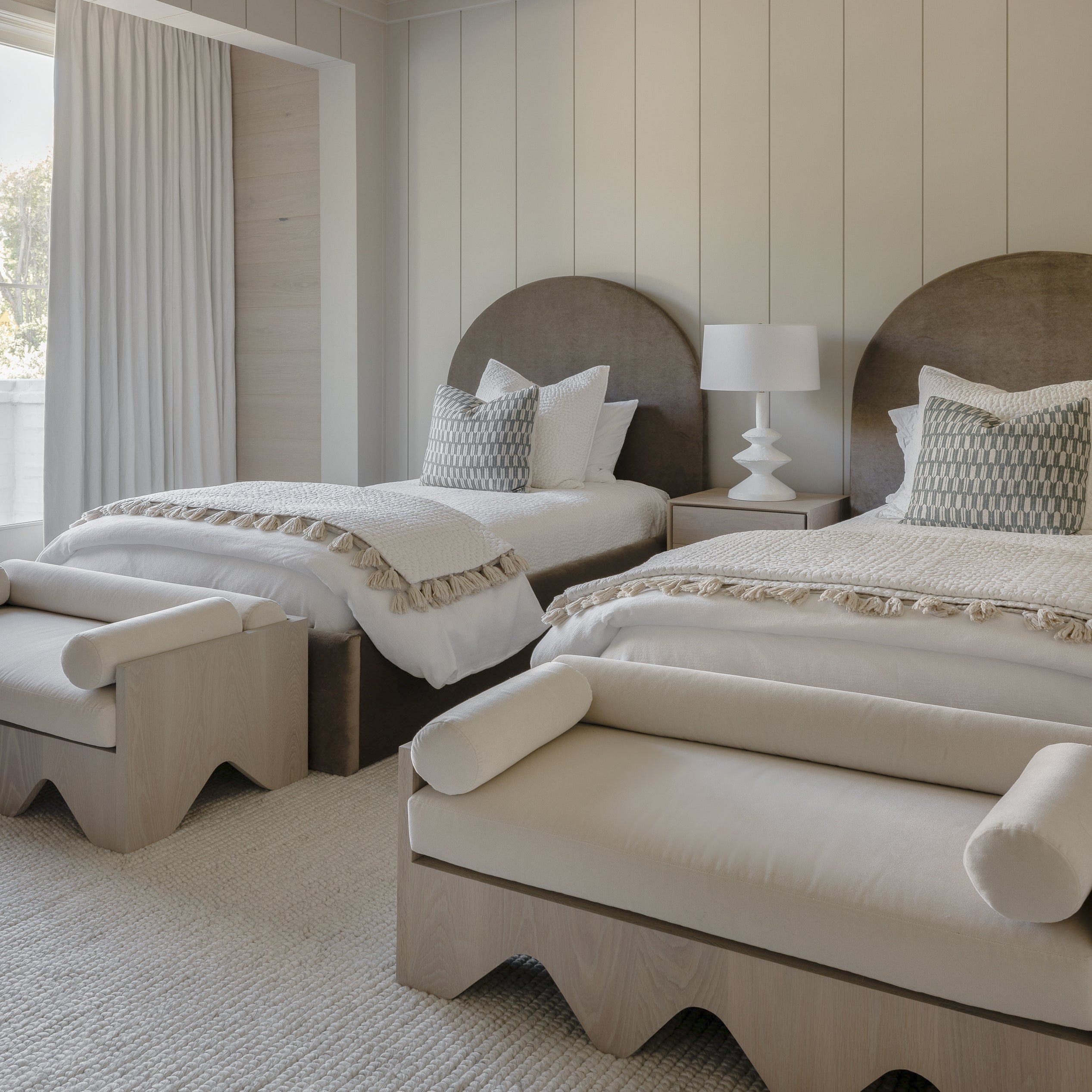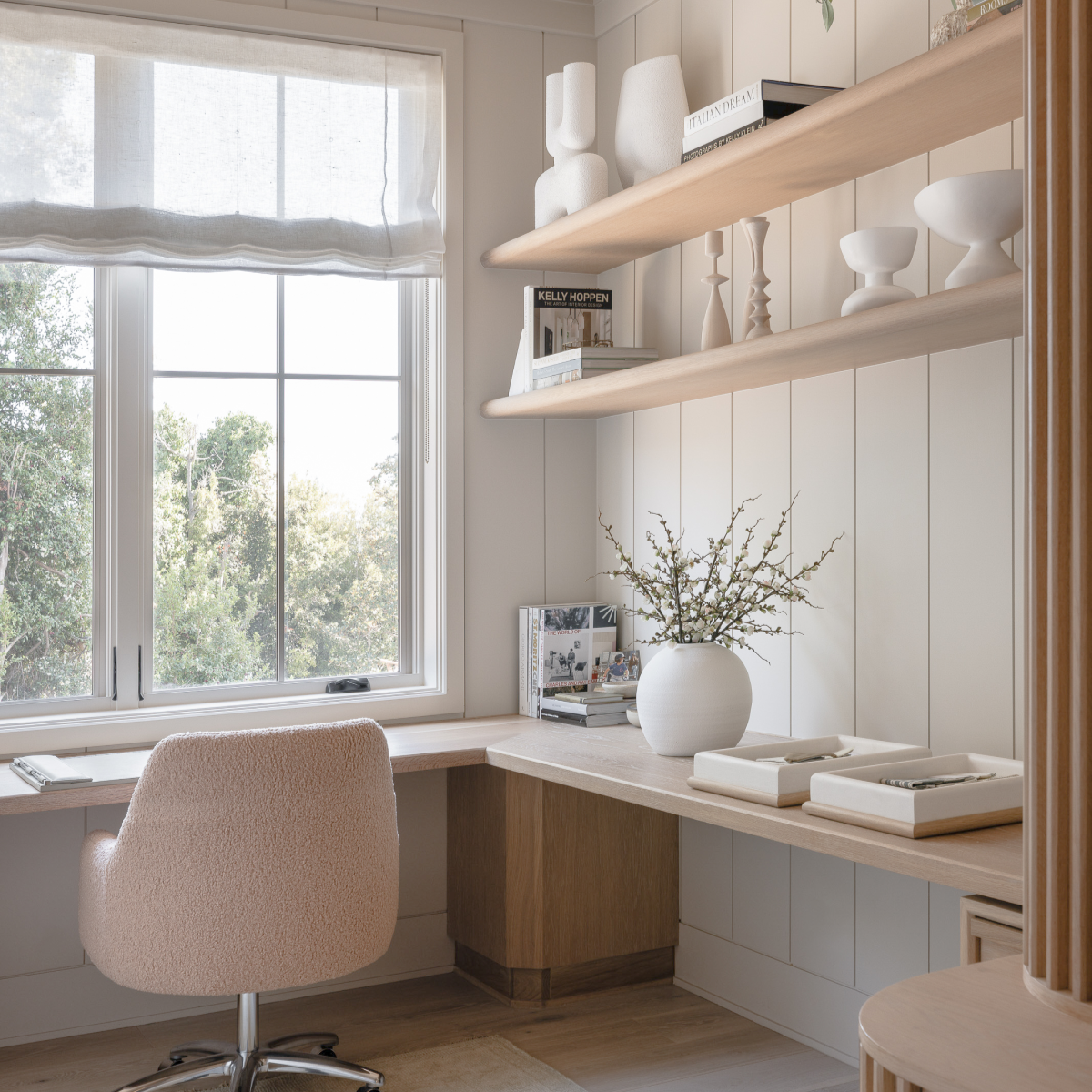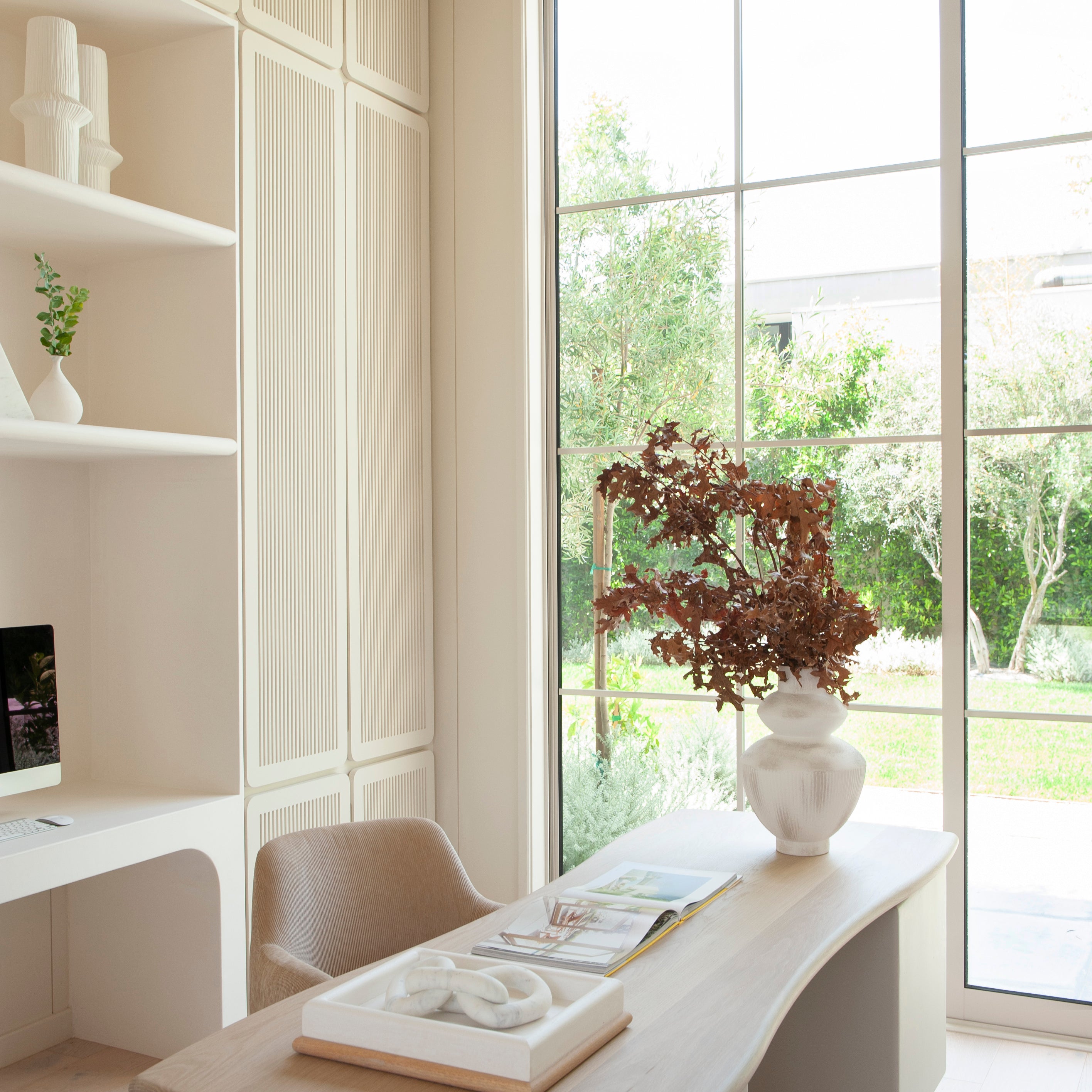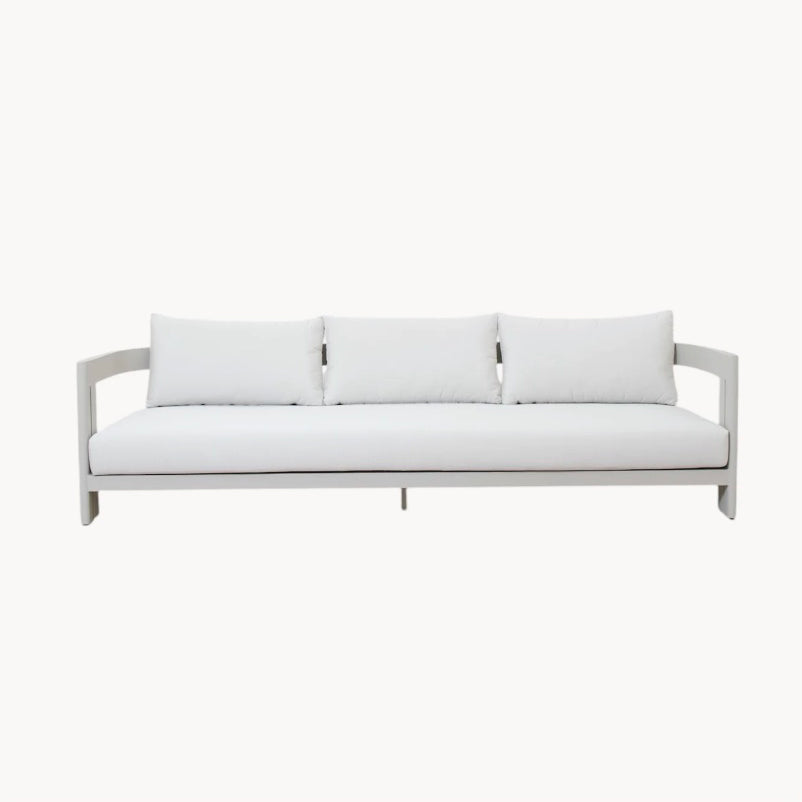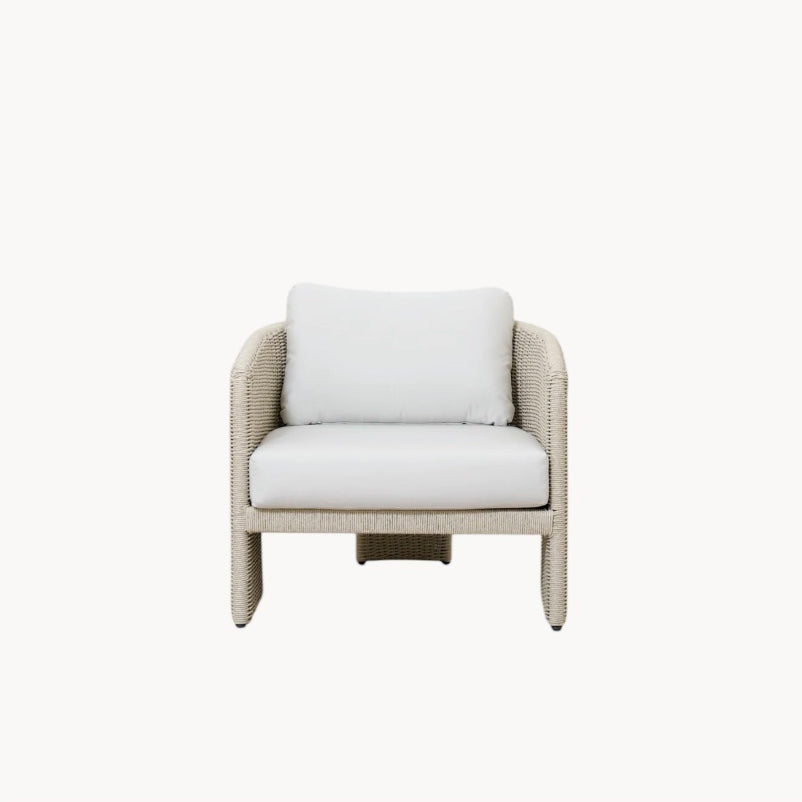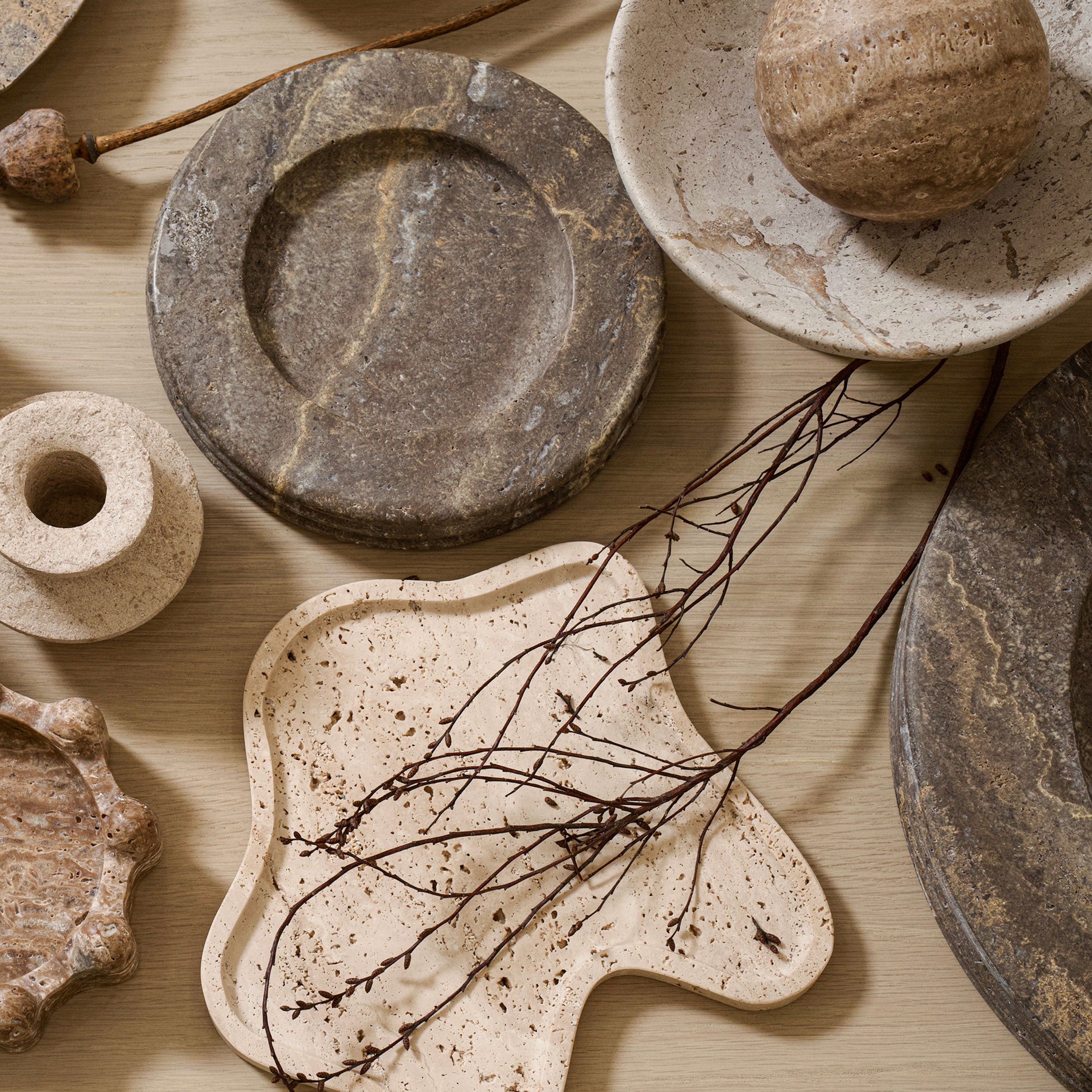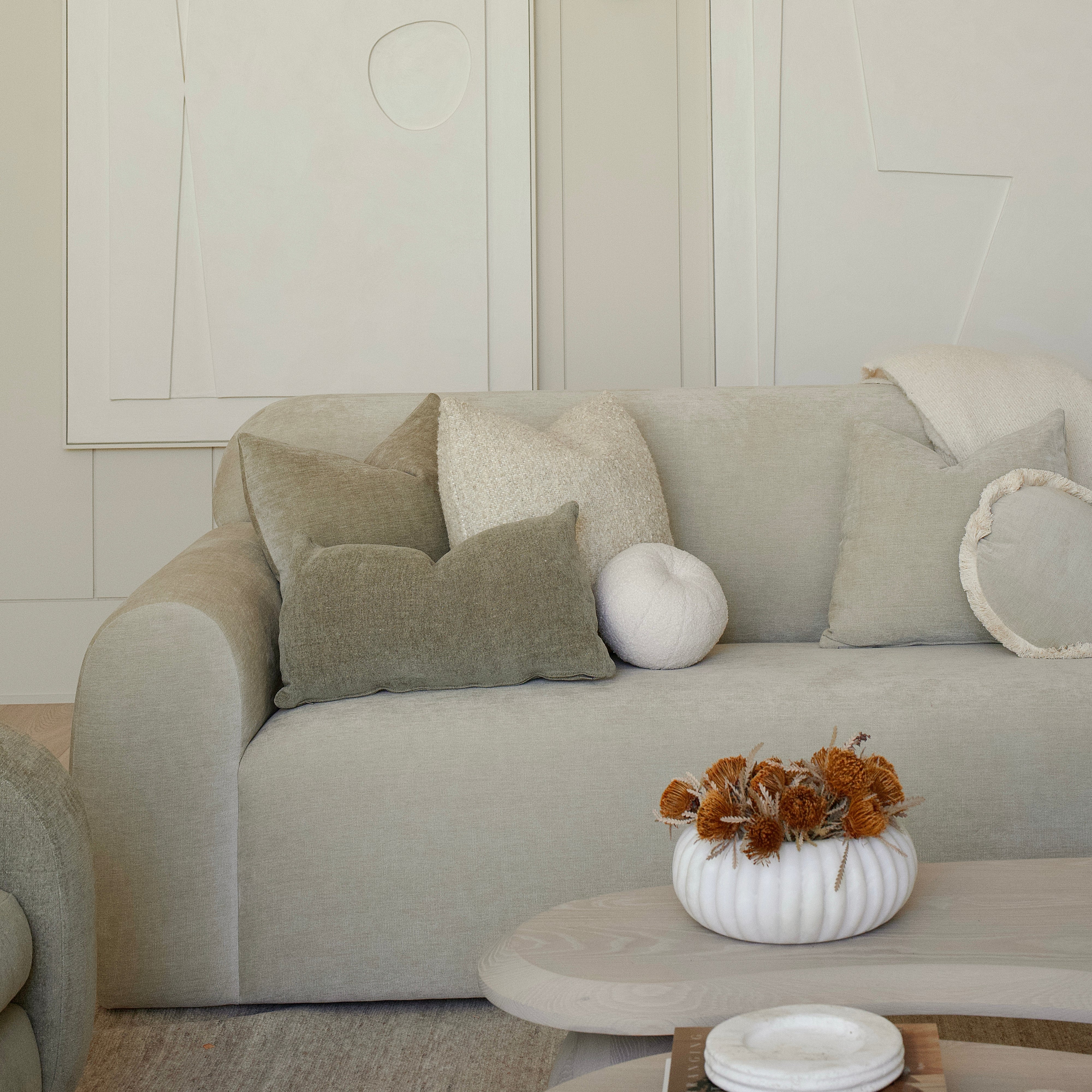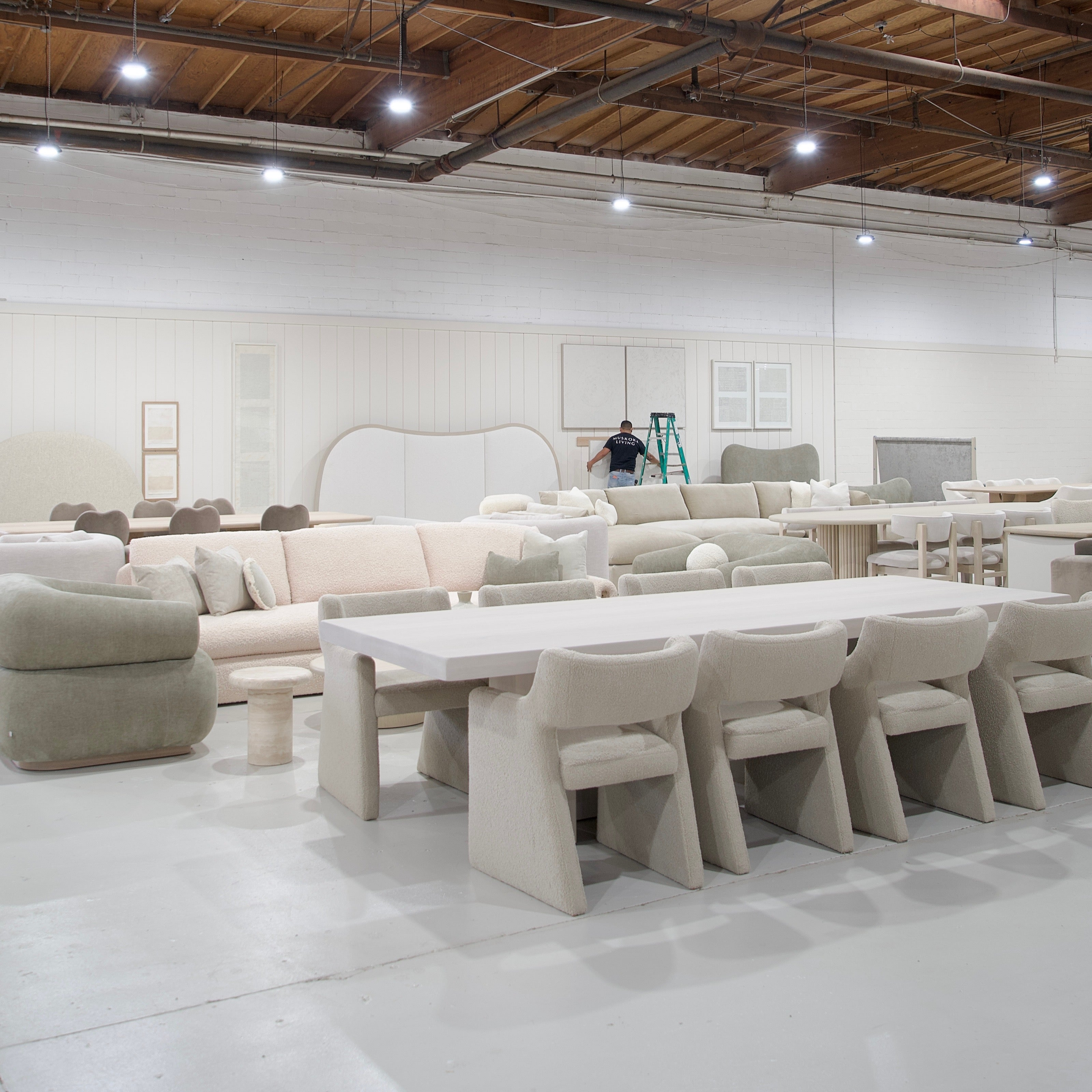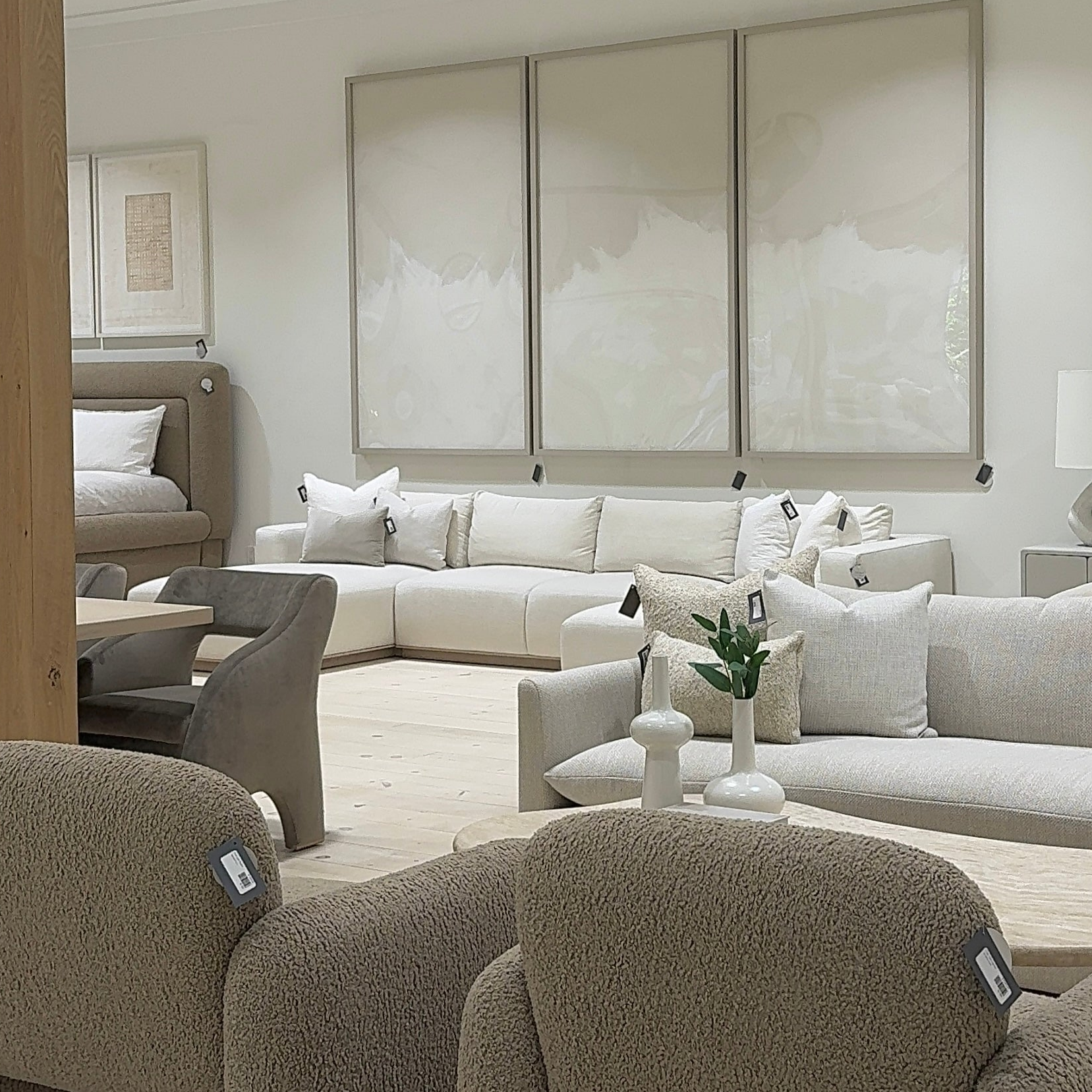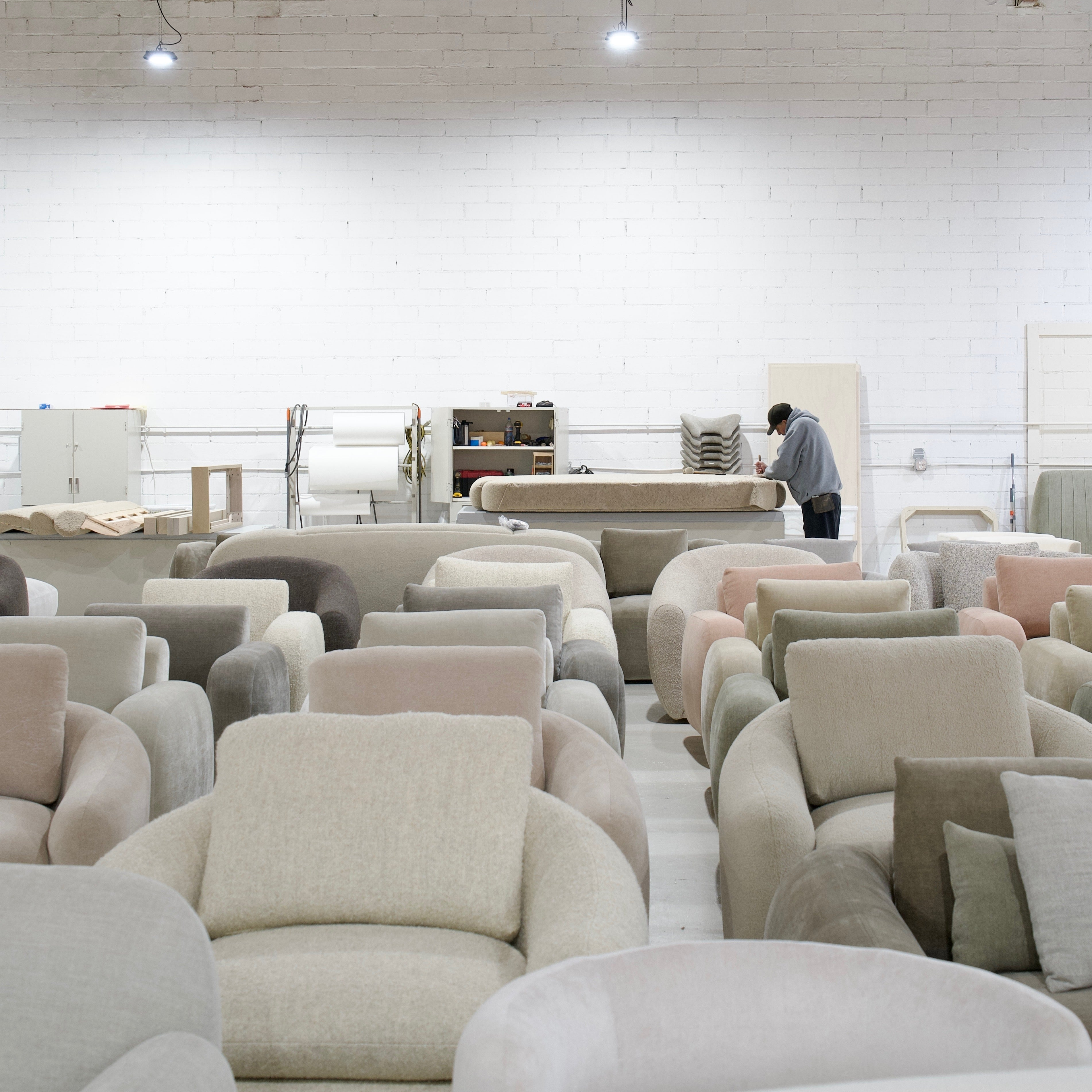General Care & Maintenance Instructions - Upholstery
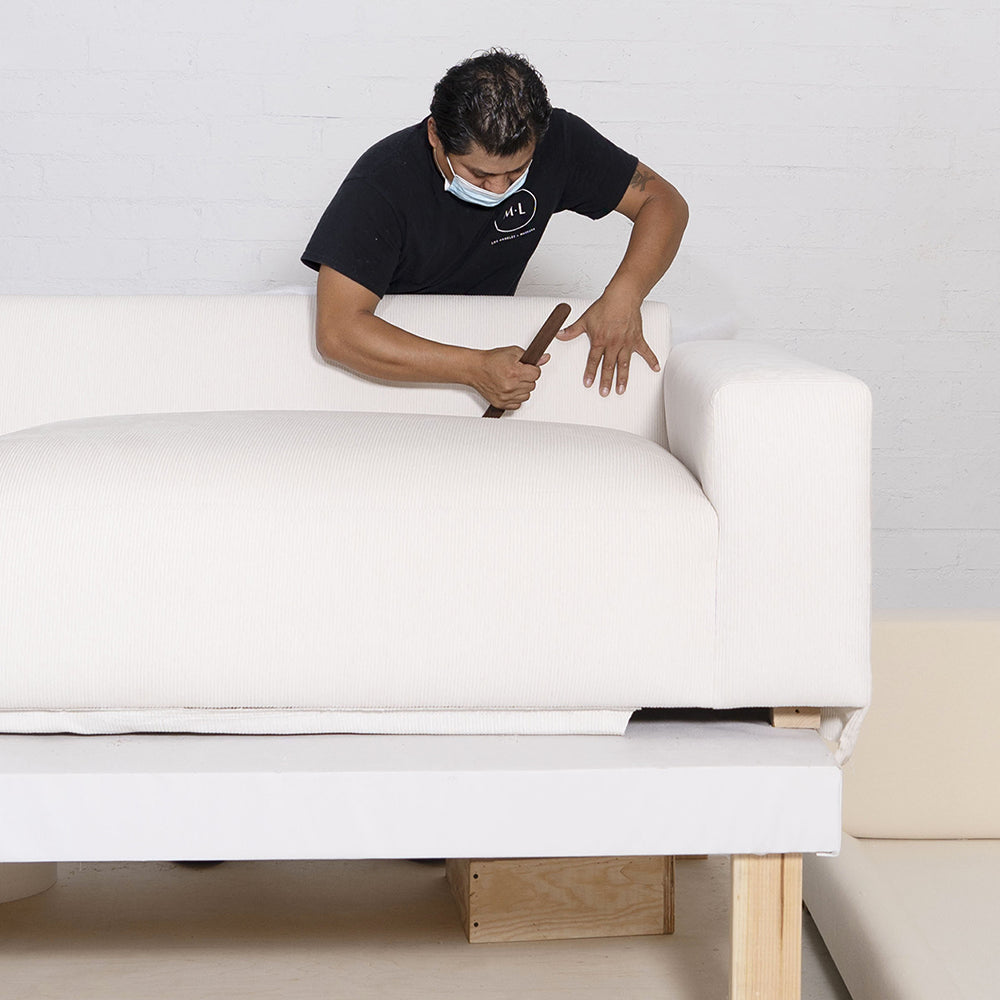
Cushion Fluffing & Shaping
Even with our standard Trillium fill, which offers the softness of down with added structure and resilience, we recommend occasional fluffing to keep cushions looking full and supportive. Gently pat or knead the cushions, and rotate them regularly to promote even wear.
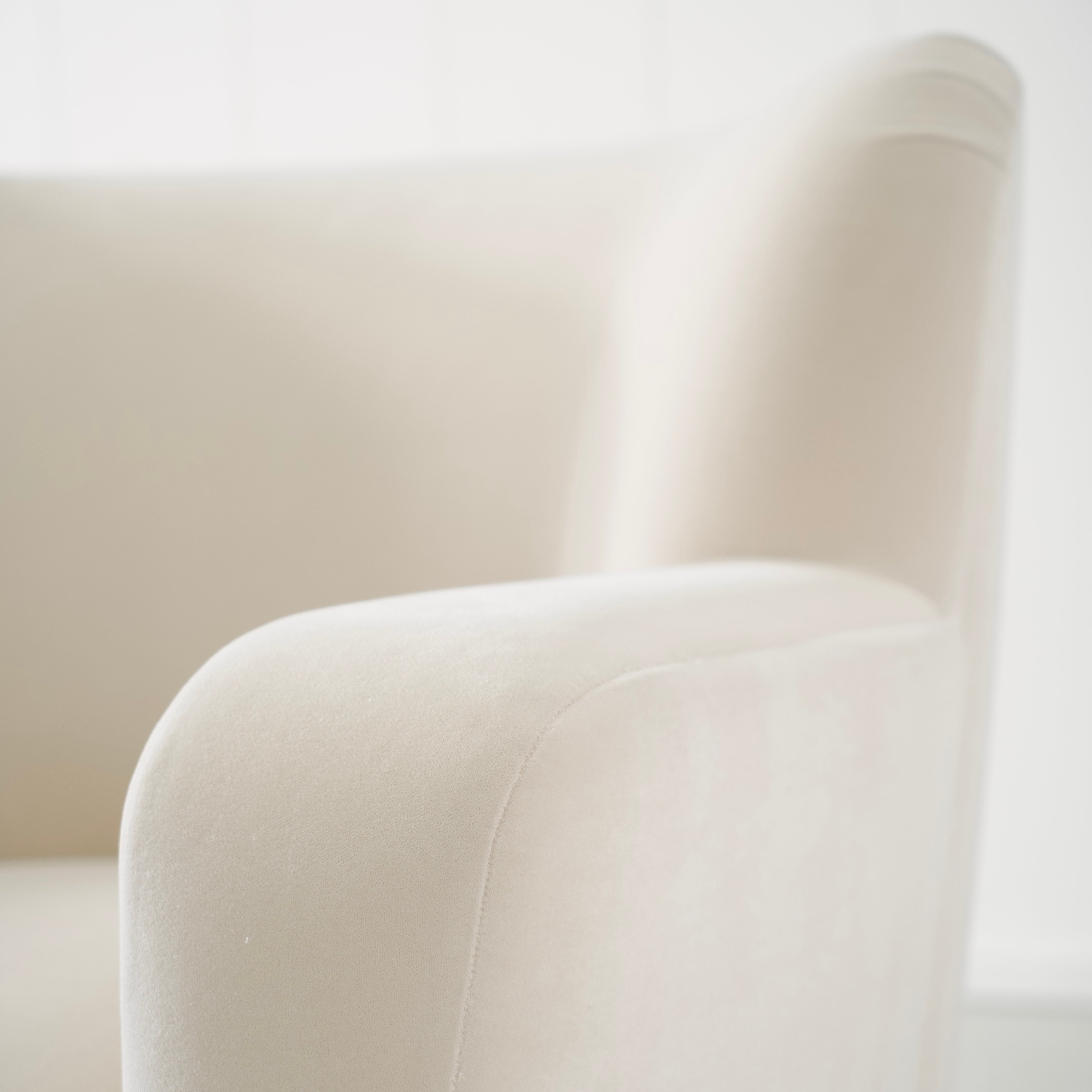
Settling Over Time
It’s natural for seat and back cushions to settle slightly with regular use. You may notice some slight wrinkling or a relaxed look in certain areas—this is a hallmark of high-quality upholstery and part of the lived-in charm. Regular adjustment helps maintain balance across all sides.
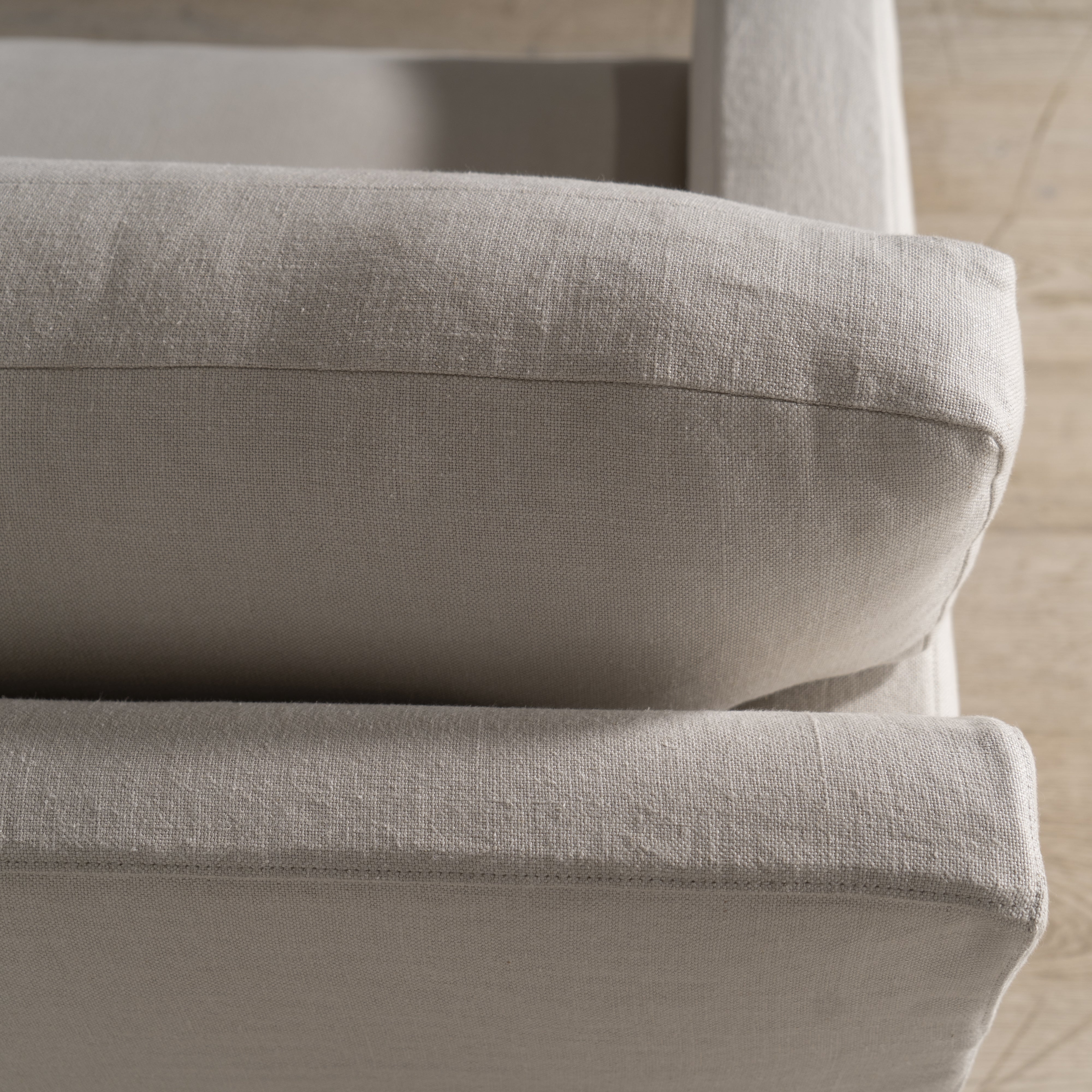
Slipcover Adjustment
If your piece includes a slipcover, it may shift subtly with daily use. After removing it for potential cleaning, take care to reposition and smooth it carefully back into place, ensuring seams align and corners are neatly tucked for a clean, tailored look.
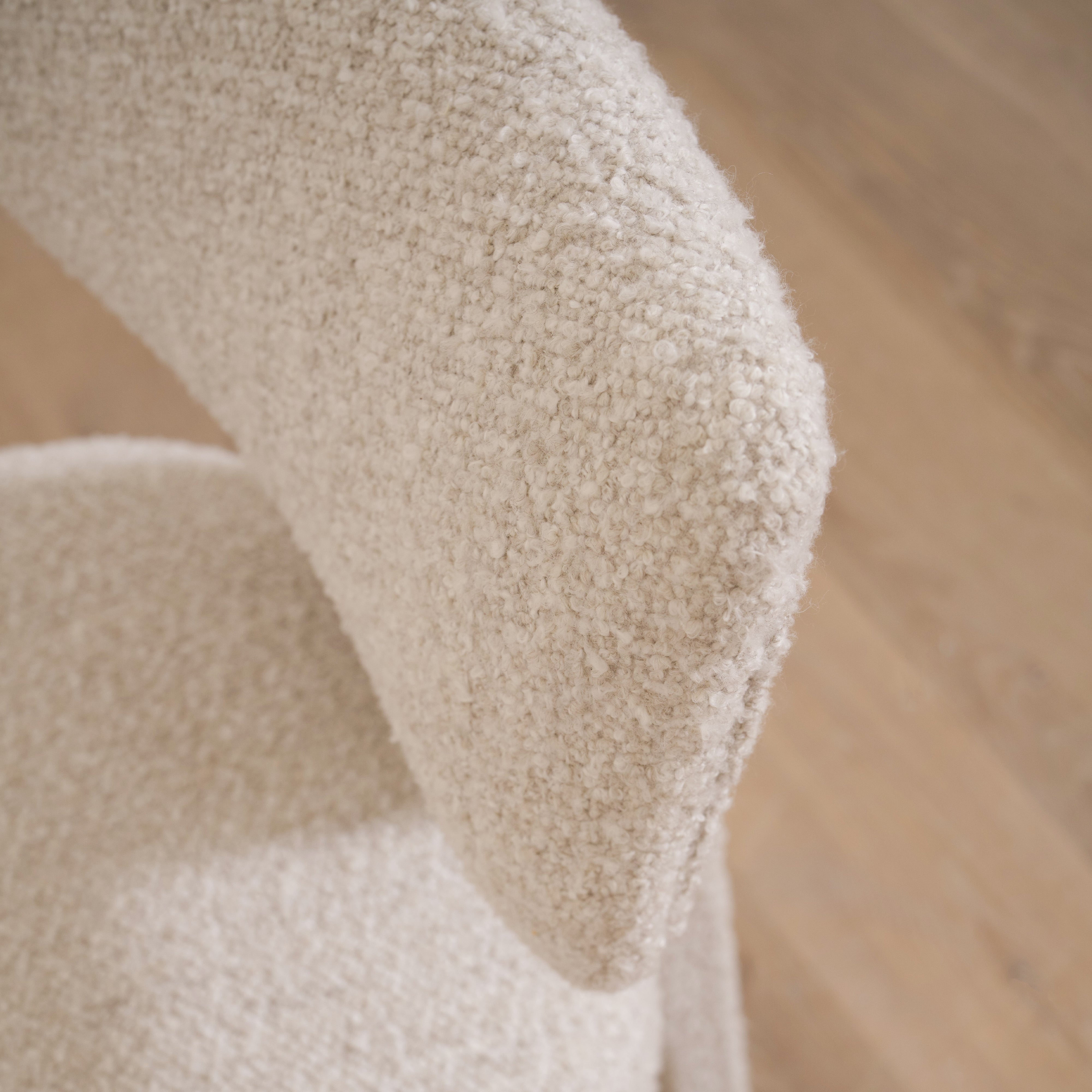
Fabric Behavior
Natural fabric movement—such as minor puckering, folding, or soft creasing—is expected with high-end upholstery and linen blends. These textures develop as part of the piece’s character. To help maintain the fabric’s integrity, avoid prolonged direct sunlight, which may cause fading over time, regardless of whether it is performance grade.
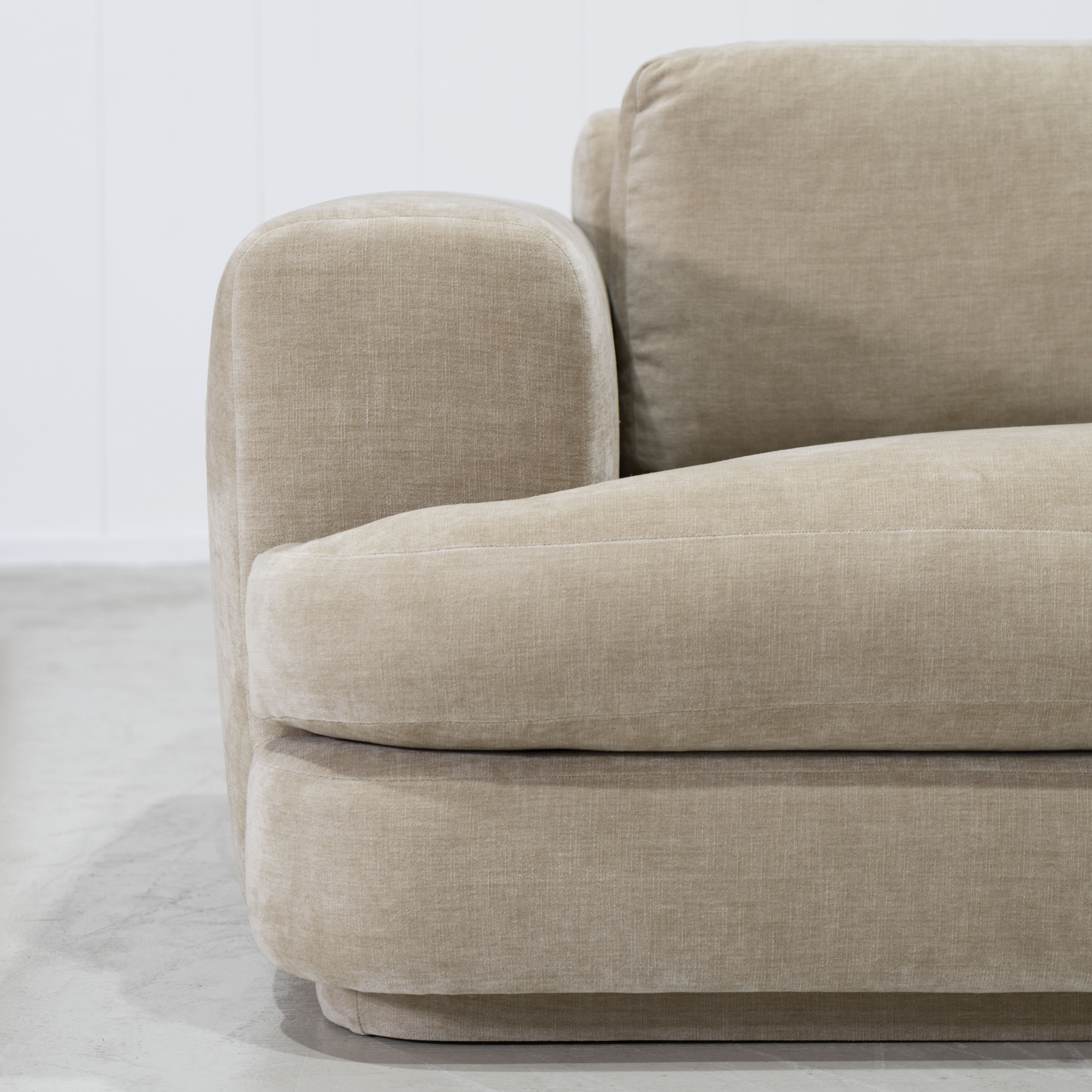
Rotation & Weight Distribution
To preserve the life of your seating, rotate loose cushions and occasionally change your seating position. Avoid sitting in the exact same spot every day—especially on one end of a sofa or sectional—as this will help minimize uneven wear or sagging.
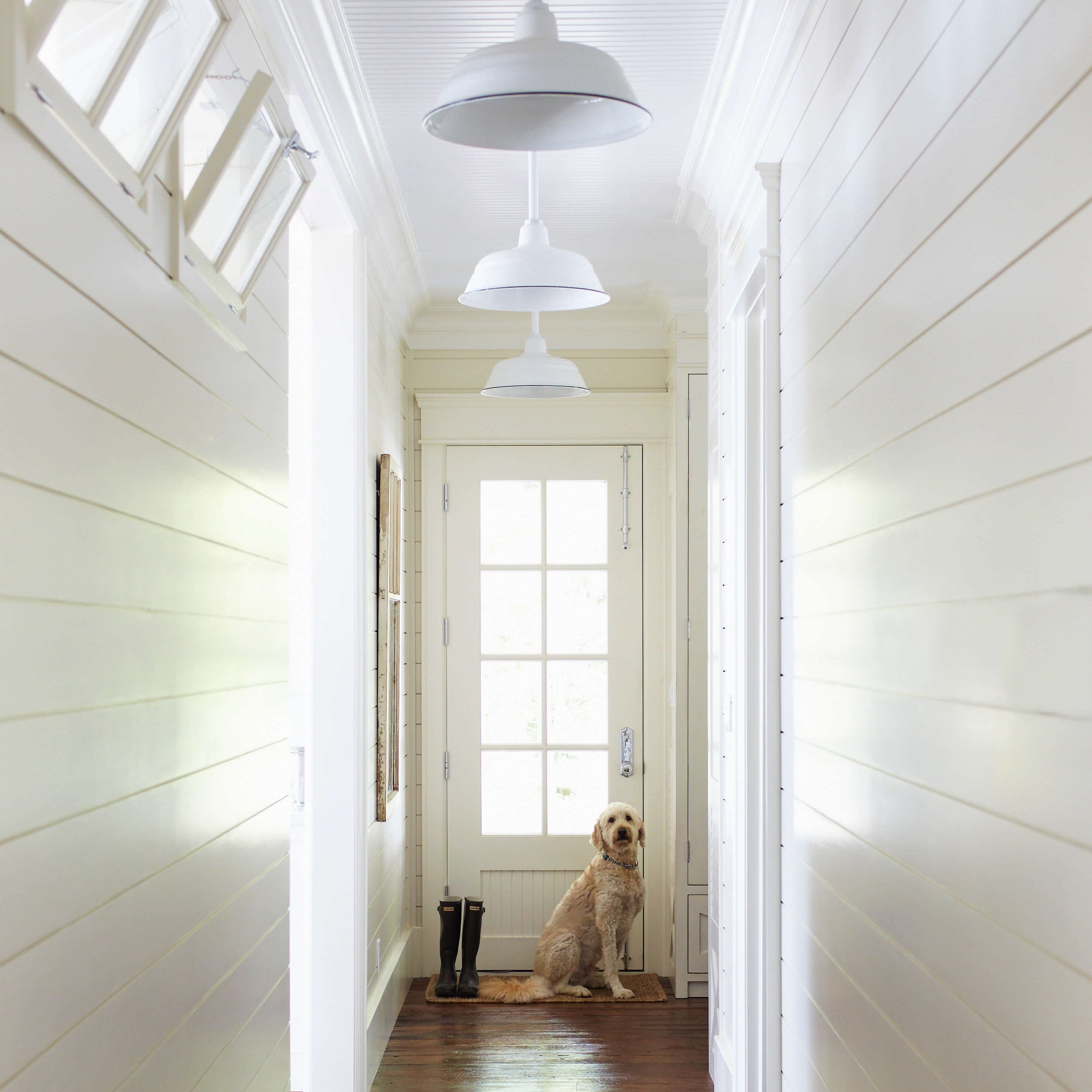
Pet Considerations
While we love our furry companions, pet claws, fur, and oils can impact fabric over time. If pets are part of your home, we recommend regular vacuuming and using a throw or cover on high-traffic zones to protect the upholstery.
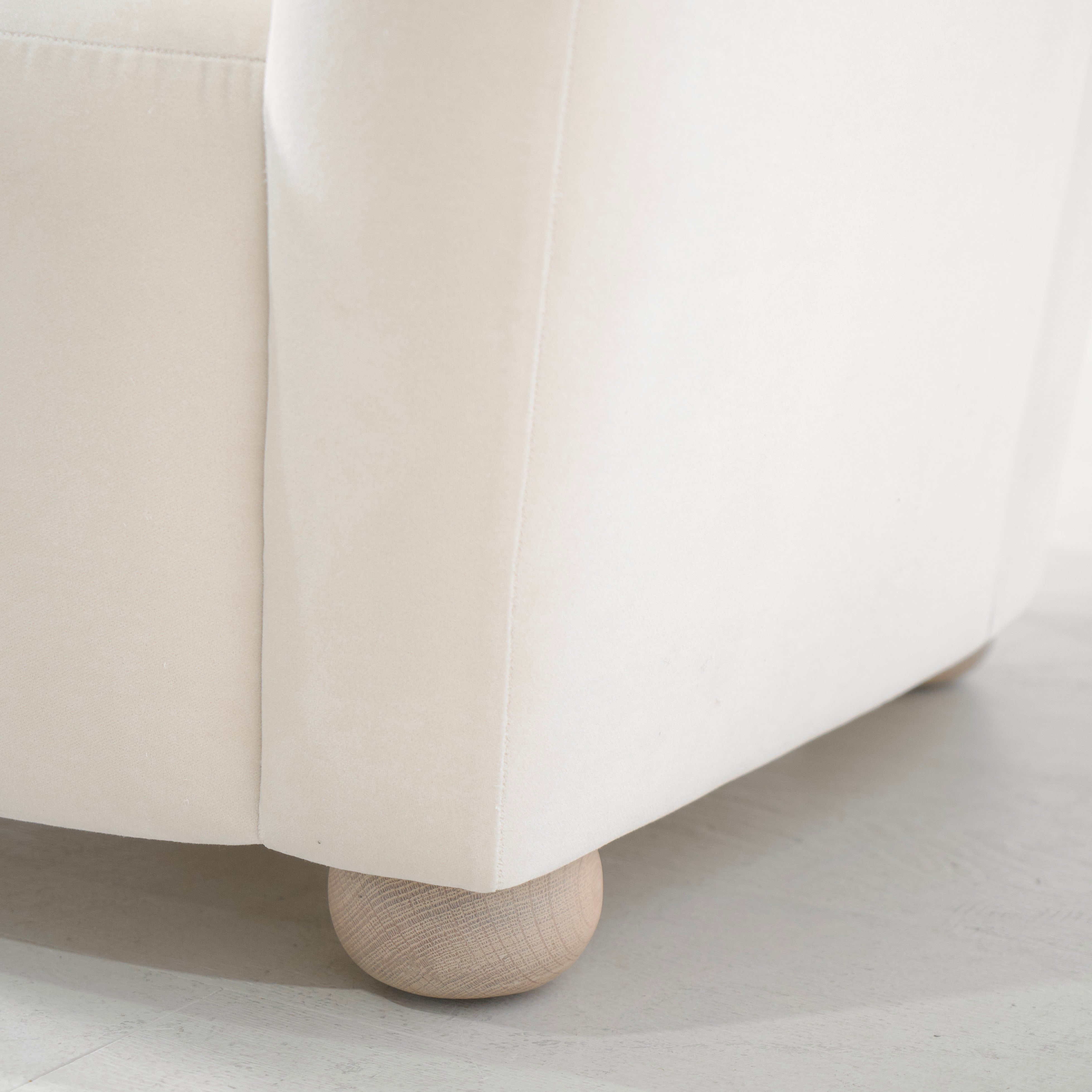
Vacuuming & Dusting
Light vacuuming with a soft brush attachment helps keep upholstery clean and fresh. Dust wooden or stone elements with a soft, dry cloth—avoid harsh chemical cleaners that may strip finishes or damage sealed surfaces.

Avoid Harsh Edges & Sharp Items
Take care when wearing clothing with zippers, rivets, or buckles, which can snag or wear down fabric over time. Be cautious when placing items with sharp edges or corners directly on upholstered or wood surfaces.
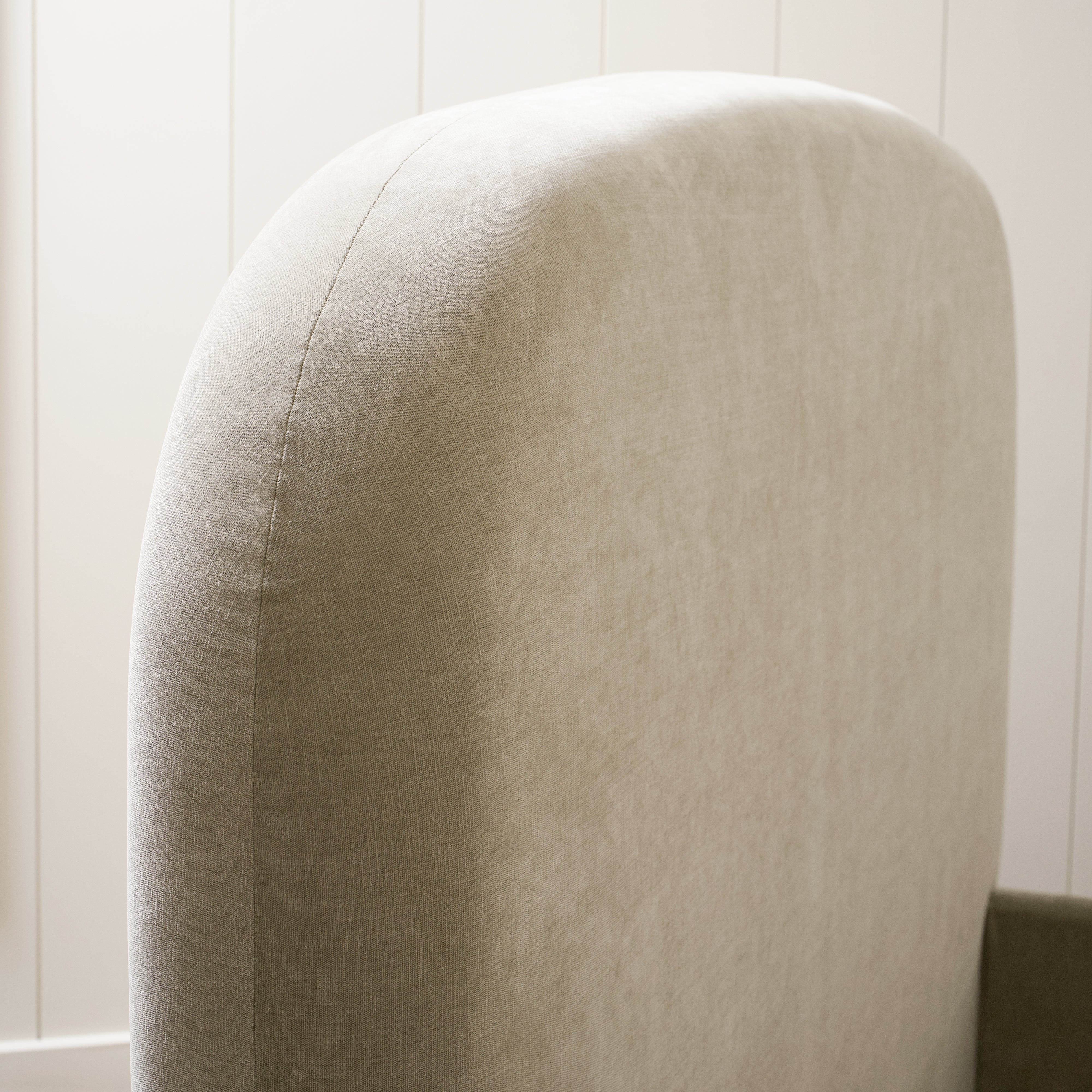
Lived-In Beauty
Minor shifts in form, light creasing, and gentle wear are all part of the natural aging process—and the beauty—of high-end furniture. With a bit of ongoing care, your piece will continue to bring comfort and character to your space for years to come.
Indoor Performance Fabrics – Cleaning Instructions
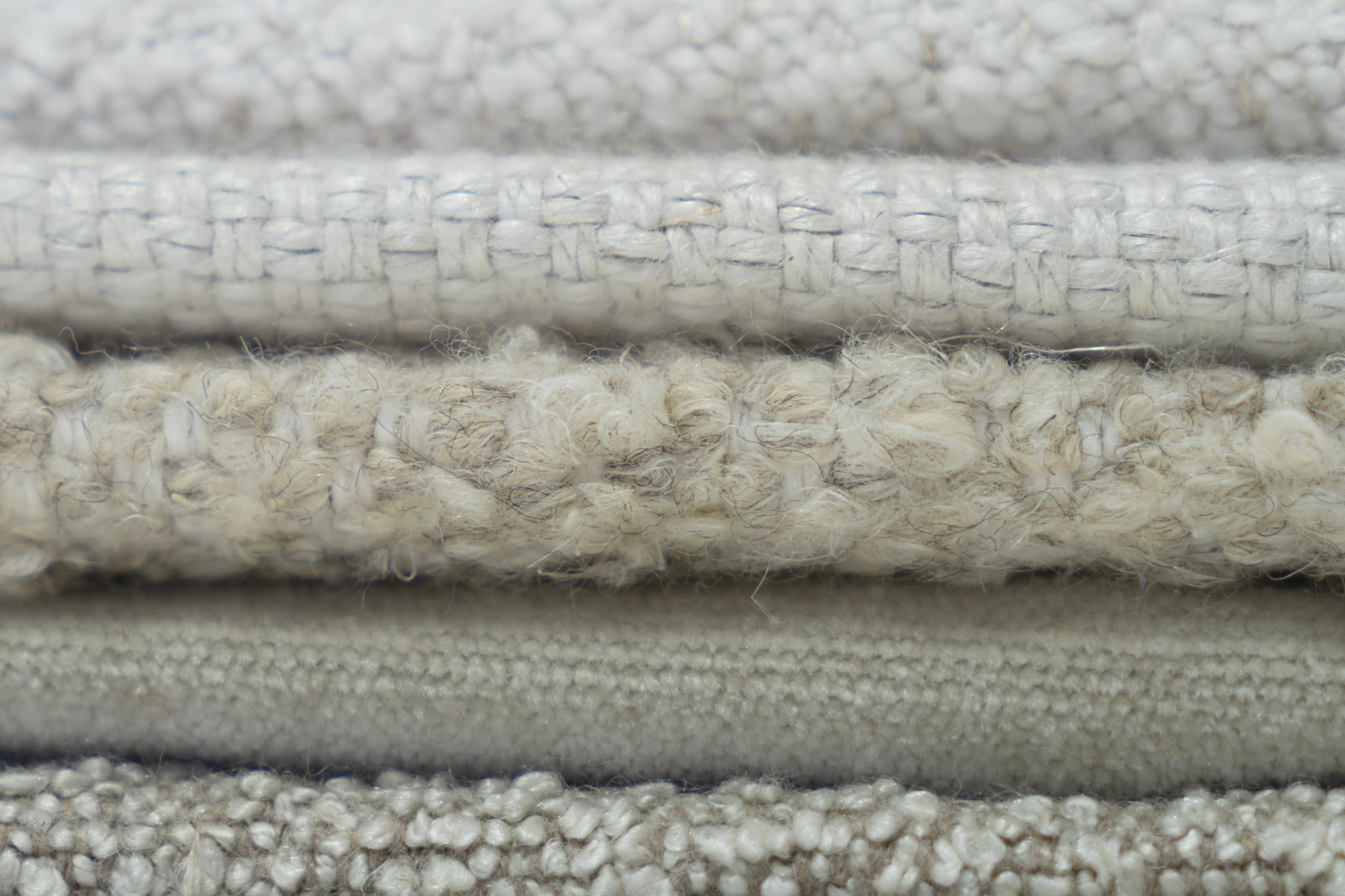
Indoor Performance Fabrics – Cleaning Instructions
Select fabrics are performance-grade (listed or please confirm with your representative if you are unsure). Most water-based spills will blot off the fabric with a clean, dry, and absorbent cloth, but for the most difficult stains, follow these instructions:
- Before spot cleaning, blot liquids on the surface with a clean, soft towel and brush off any loose dirt.
- Prepare a cleaning solution of ¼ tsp mild, enzyme detergent, such as Tide®, Woolite® or Dawn® dishwashing liquid, per 1 cup of lukewarm water.
- Apply the cleaning solution using a misting spray bottle. Do NOT oversaturate when applying the cleaning solution.
- Work the solution into the affected area by lightly scrubbing the area with a sponge or soft bristle brush. Make sure to work from the outside of the stain inward so as not to spread the stain and rinse your sponge or brush frequently.
- Allow cleaning solution to soak into the fabric.
- Rinse thoroughly to remove all soap residues, as residues will attract dirt. Blot excess moisture with a clean, soft towel or sponge.
- Repeat steps 3-6 as needed.
- Allow fabric to air dry. Some stains, such as permanent marker, lipstick and nail polish may not be completely removable.
Some stains, such as marker, ink, lipstick and nail polish may not be completely removable.
Cleaning is at the sole and full discrection of the customer.
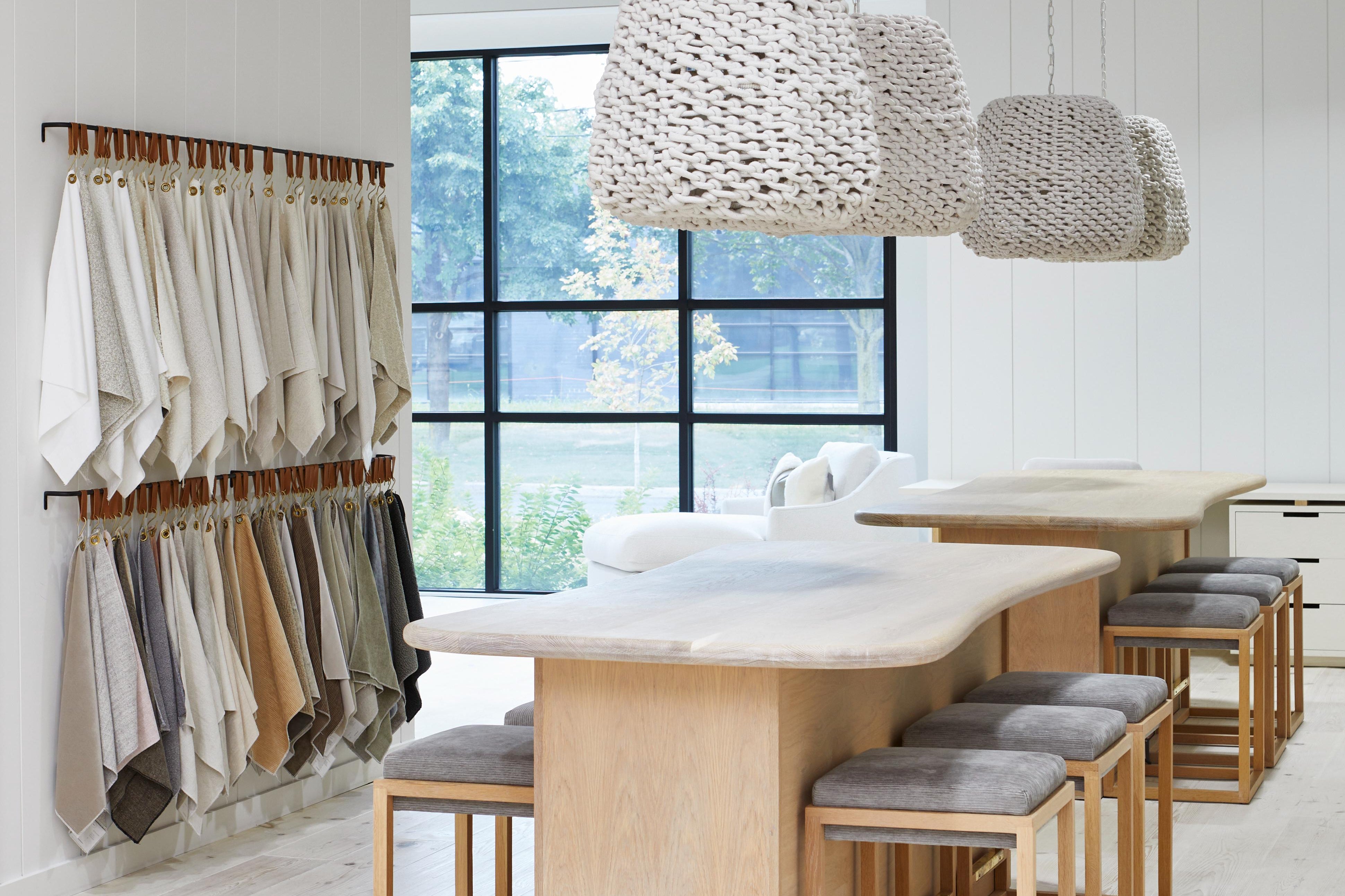
Indoor Performance Canyon Fabrics – Cleaning Instructions
Muskoka Living’s Canyon Fabrics are performance fabrics. Most spills will blot off the fabric with a clean, dry, and absorbent cloth, but for the most difficult stains, follow these instructions:
- Using a clean cloth, gently blot away excess liquid, and then use water to lift the stain without spreading or pressing into the fabric.
- Mix a mild soap and water solution and repeat the above process (mix 1 tsp enzyme detergent, like Tide® or Woolite®, with 2 cups of warmwater) Rinse away soap thoroughly and allow to dry.
Some stains, such as marker, ink, lipstick and nail polish may not be completely removable.
Outdoor Fabrics – Cleaning Instructions
Fabrics that are not performance (linen, non-performance boucle) should be addressed by a professional cleaner. Please note that stains may not be able to be remedied by a professional cleaner.
Outdoor Fabrics – Cleaning Instructions
All outdoor fabrics have a surface finish that makes the fabric water and stain repellent. If you spill liquid onto the fabric, it will 'bead' on the surface and can generally be dabbed away.
- Remove any loose dirt and debris
- Blot (don't rub) any spills with a clean, dry cloth
- Prepare a cleaning solution of 1:16 mild detergent to lukewarm water (less than 100 degrees F / 40 degrees C)
- Spray or sponge on the cleaning solution
- Allow cleaning solution to soak into fabric
- Rinse thoroughly to remove all soap residue
- Allow fabric to air dry
Cleaning is at the sole and full discretion of the customer.
General Care & Maintenance Instructions - Casegoods
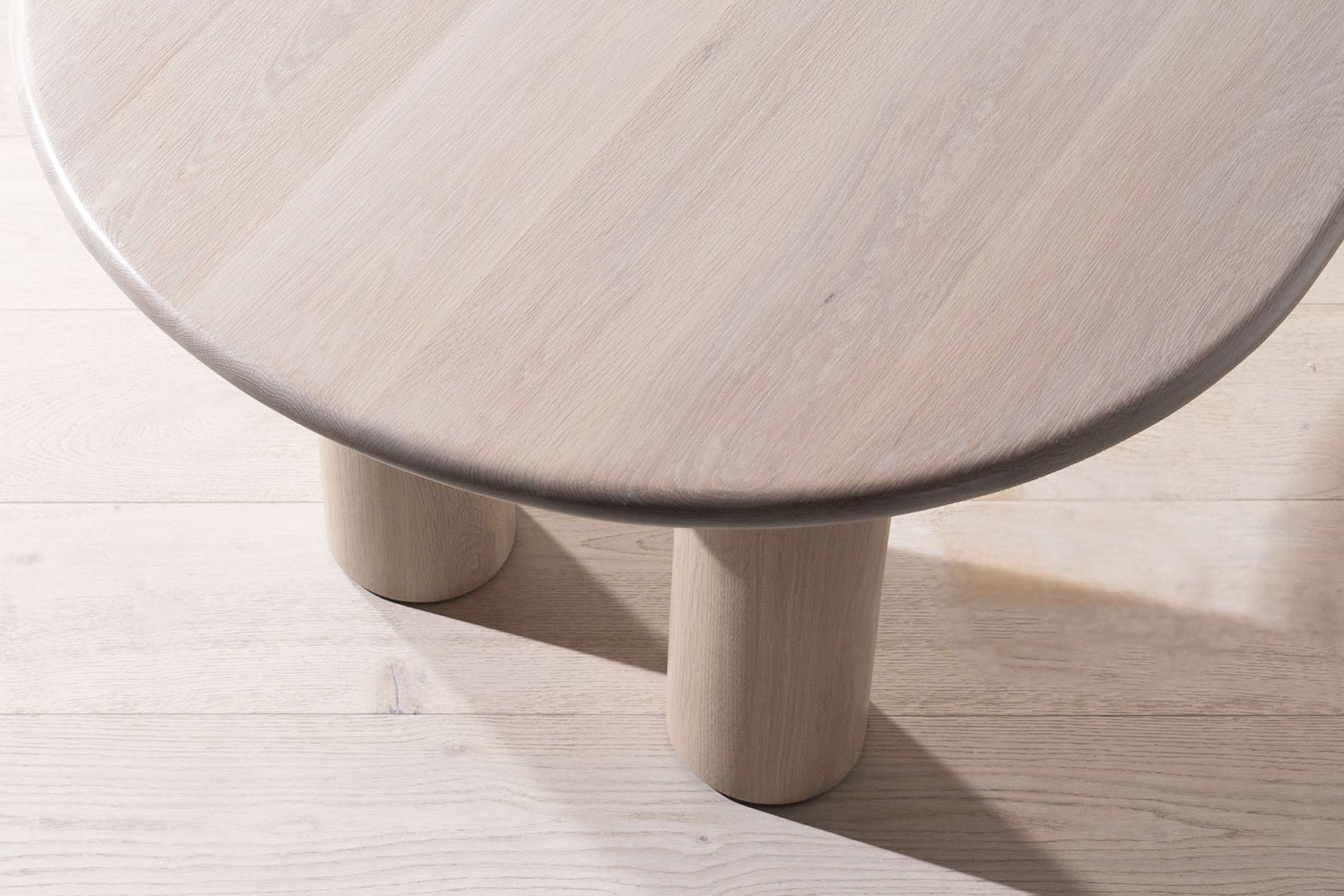
Natural Behaviours of Wood - Disclaimer
Most of Muskoka Living's case goods are composed of Grade A select white oak or a combination of hardwood veneers and are finished with semi-transparent stains that highlight each piece and their unique identity. Our earthy limestone finish is also comprised of natural materials. As a result, our products may vary in shade, texture or markings. These are not considered defects of the product, but rather a beautiful reminder of their organic composition.
Shifting in nature may occur, which often results in cracking. This is a completely normal response to the furniture's environment and is not considered a defect.
The best way to minimize the likelihood of cracking is to maintain moderate humidity levels between 40-60% and temperatures between 14-21 degrees Celsius. This will reduce the frequency of cracking; however, it should be expected that cracking will occur regardless of a controlled environment.
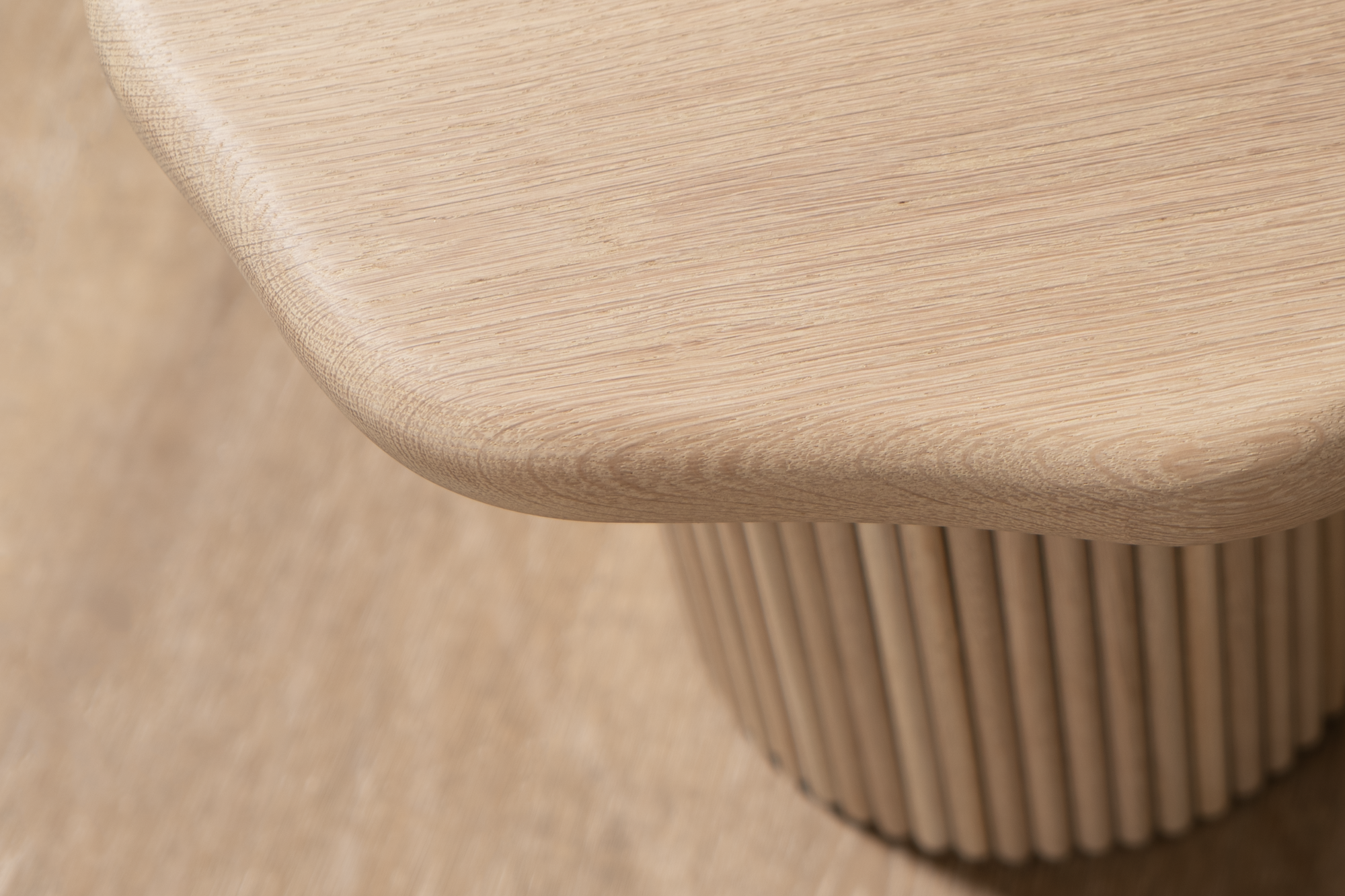
Regular Care + Maintenance
The wood is protected with multiple layers of high grade flat lacquer which is highly resistant, however, this is no guarantee against stains and markings. Post-delivery, it is important to tend to your pieces according to our care instructions.
- We recommend using heat protectant pads and felt pads to prevent marking. Avoid dragging items on the piece.
- In the event of a spill, wipe the surface immediately with a damp cloth and follow with a dry soft cloth to prevent marking. Unfortunately, we cannot guarantee that staining will not occur, especially against oil based substances, wine, and other permanent type substances such as markers/nail polish etc.
- Do not use soap containing detergent or other harsh chemicals. Unfortunately, we cannot guarantee that staining or marking will not occur.
Please note that the lacquer becomes harder over time. We recommend using even more caution in the first few months of use to allow the lacquer to reach it's most effective durability.
Plaster Limestone Care + Disclaimer
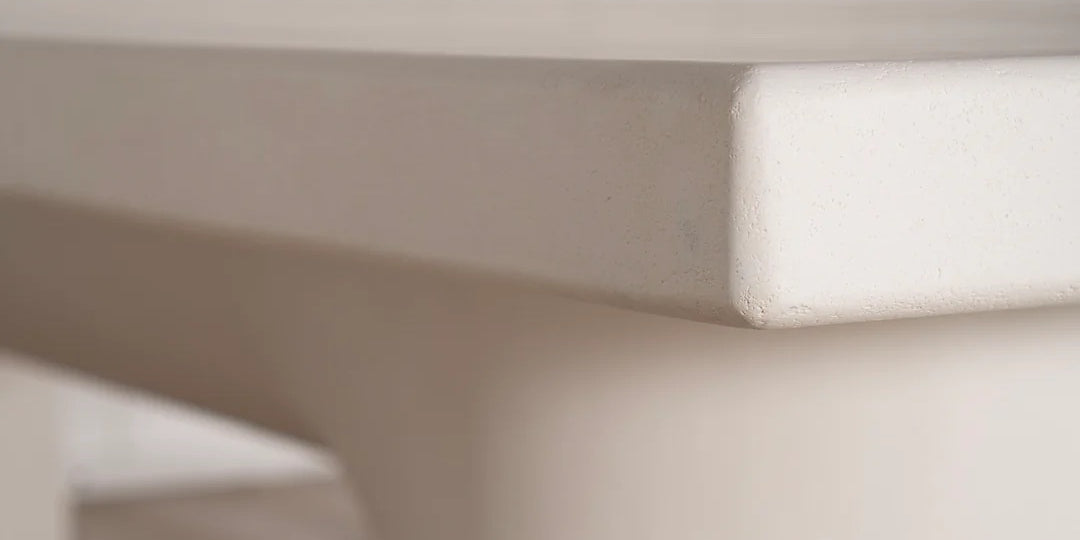
Muskoka Living's plaster limestone furniture pieces are finished using our proprietary multi-step limestone micro coat process. As a result, our products may vary in texture or markings. These are not considered defects of the product, but rather a beautiful reminder of their unique nature.
Regular Care
The plaster limestone is protected with multiple layers of high grade flat lacquer. However, this is no foolproof guarantee against stains and markings. Post-delivery, it is important to tend to your pieces according to our care instructions.
- We recommend using heat protectant pads and felt pads to prevent marking. Avoid dragging items on the piece.
- In the event of a spill, wipe the surface immediately with a damp cloth and follow with a dry soft cloth to prevent marking. Unfortunately, we cannot guarantee that staining will not occur, especially against oil based substances, wine, and other permanent type substances such as markers/nail polish etc.
- Do not use soap containing detergent or other harsh chemicals. Unfortunately, we cannot guarantee that staining or marking will not occur.
Stone Care & Maintenance
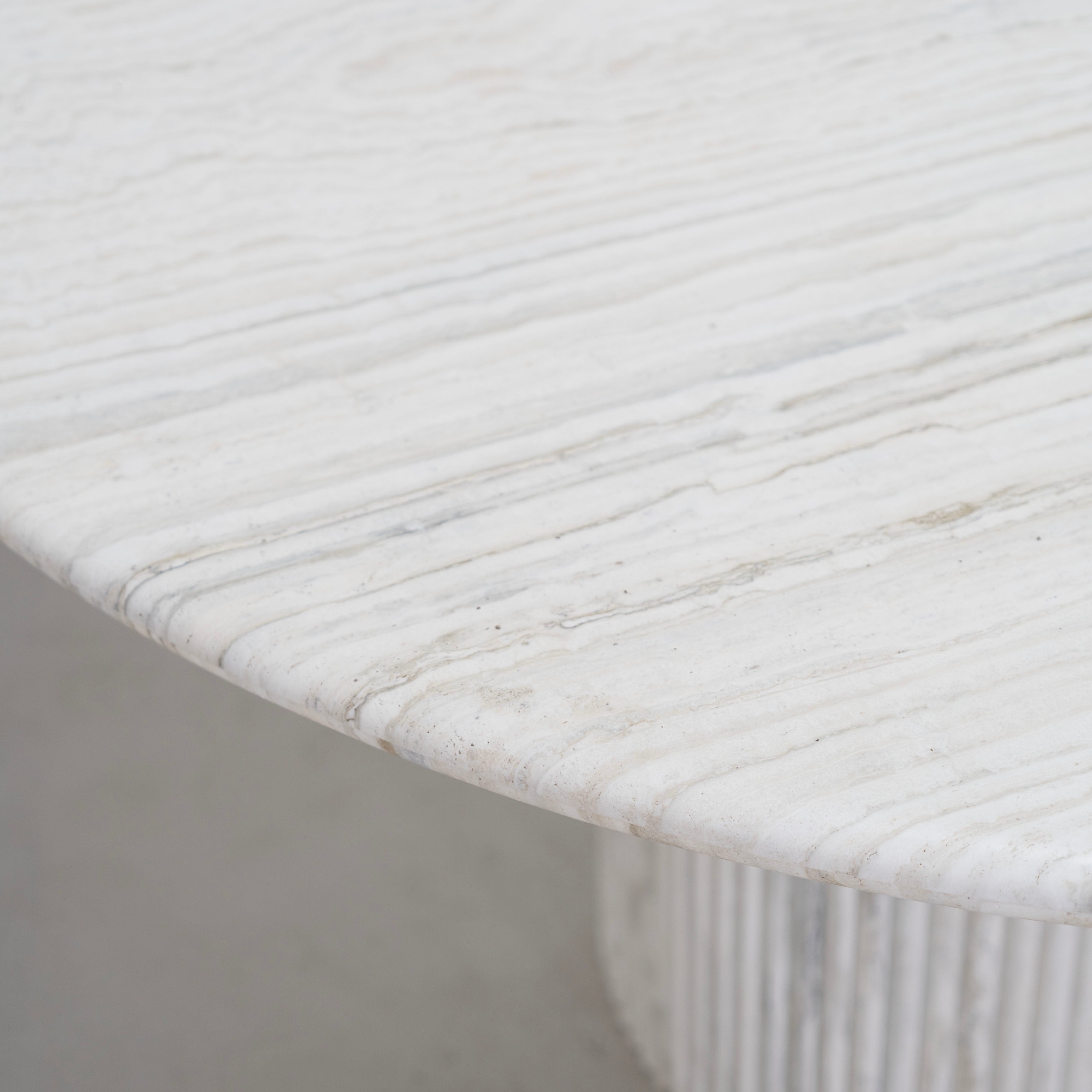
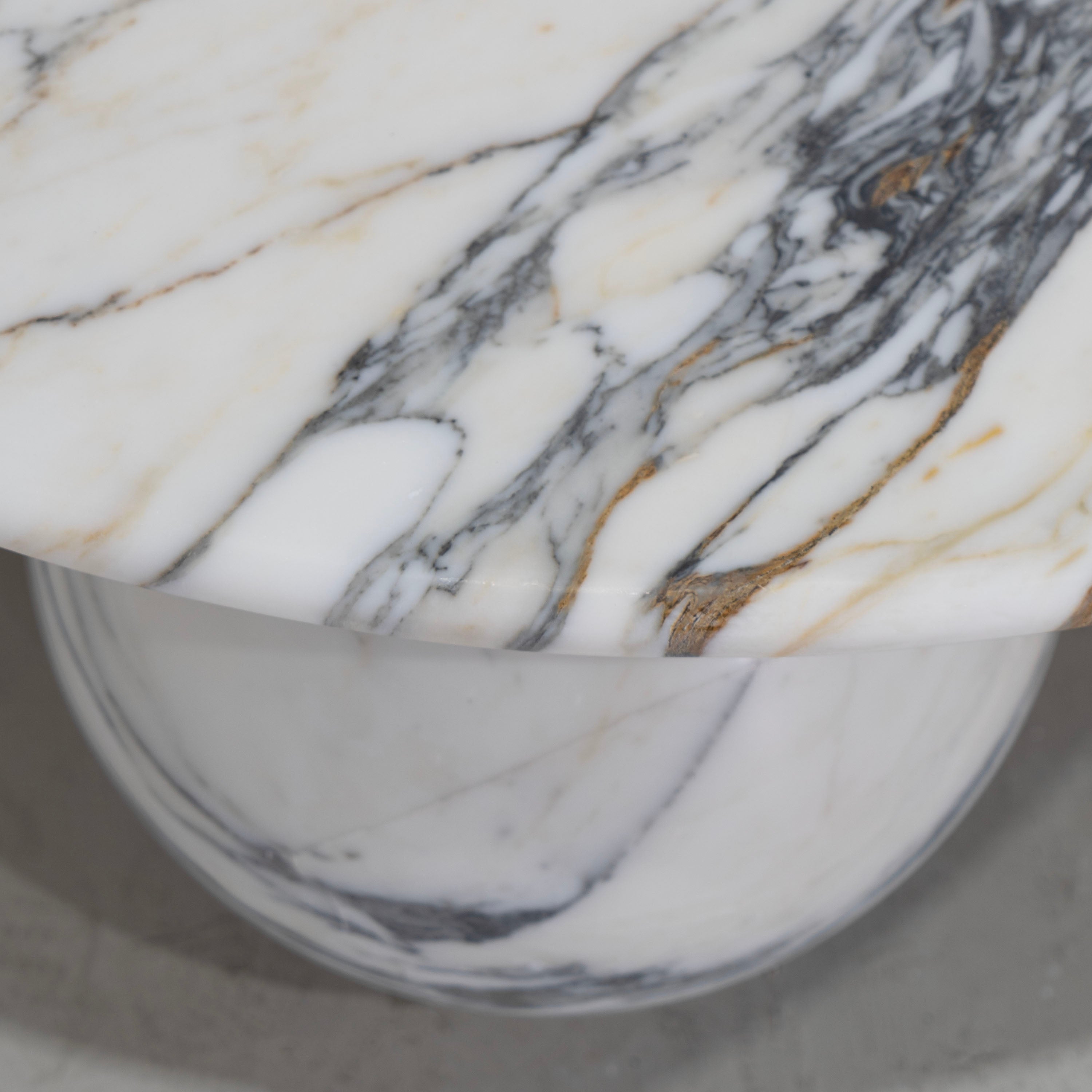
Our stone pieces are crafted from natural materials like travertine and marble, each with unique variations that add to their timeless character. To preserve their beauty, we recommend the following care and maintenance guidelines:
Daily Care
- Wipe gently with a soft, damp cloth. Avoid abrasive scrubbers that may scratch the surface.
- For regular cleaning, use a pH-neutral stone cleaner or mild dish soap diluted in water.
- Always dry surfaces thoroughly to prevent moisture absorption, especially with porous stones like travertine.
Spill Management
- Blot spills immediately—do not wipe—as natural stone can absorb liquids, causing stains.
- Be especially mindful of acidic substances (wine, citrus, vinegar, coffee, etc.), which can etch the stone surface, dull the finish, or cause discoloration.
Protective Measures
- Use coasters, trivets, and placemats to shield surfaces from heat, moisture, and spills.
- Felt pads under decorative objects and tableware can help prevent scratching or abrasion.
- Avoid dragging heavy or sharp items across the surface.
Sealing
- Many of our stone pieces are pre-sealed prior to delivery; however, we recommend resealing every 6–12 months, depending on use and exposure.
- Use a penetrating stone sealer appropriate for travertine and natural stone. Follow the product instructions carefully.
What to Avoid
- Do not use harsh or abrasive cleaners, bleach, ammonia, or vinegar-based solutions.
- Avoid prolonged exposure to oils, dyes, or ink that may penetrate and stain.
- Outdoor exposure or extreme temperature changes may affect the integrity of the stone—indoor use is recommended unless otherwise specified.
Natural Characteristics
- Variations in tone, veining, texture, and small surface imperfections are inherent to natural stone and part of its organic appeal.
- Travertine in particular may feature small pits or voids, which are often filled during finishing. Over time, minor surface wear is normal and contributes to the stone’s lived-in charm.

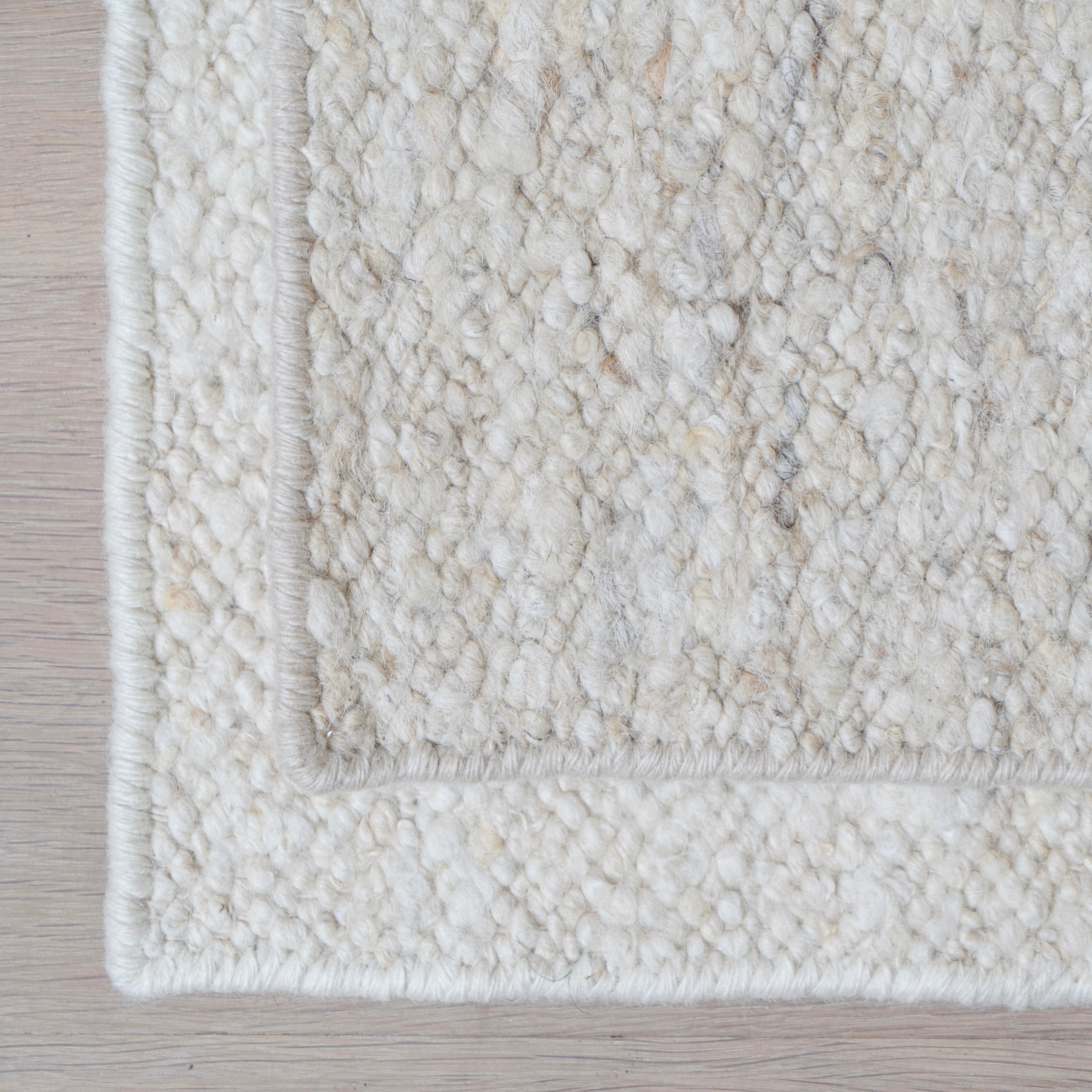
Rug Care Instructions
Routine Care
- Vacuum regularly using a low-suction setting and no beater bar/rotating brush.
Tip: Vacuum in the direction of the pile to avoid fuzzing the fibers. - Shake out periodically outdoors to remove dust.
- Rotate every 3–6 months to ensure even wear and fading.
Spot Cleaning
- Act quickly — blot spills immediately with a clean, dry, white cloth or paper towel. Do not rub.
- For more stubborn spots:
- Mix cold water with a tiny amount of wool-safe mild detergent (like Woolite or Eucalan).
- Lightly dampen a clean cloth with the solution and blot (never saturate the rug).
- Blot again with plain cold water to rinse.
- Press with a dry towel to absorb excess moisture and allow to air dry completely.
Deep Cleaning
- Do not machine wash — wool and linen can shrink, felt, or lose shape.
- For seasonal refresh, lightly brush with a soft carpet brush to lift dirt before vacuuming.
- Professional rug cleaning only for a full wash — request a cleaner experienced with hand-knotted wool and linen rugs.
Extra Care Tips
- Use a rug pad to protect the underside and reduce wear.
- Avoid prolonged direct sunlight to prevent uneven fading.
- If storing, roll (never fold)
Care Instructions - Pool Table Felt/Cloth


Our Championship Invitational cloth is a 20 oz. fabric composed of 75% wool and 25% nylon, bathed in DuPont™ Teflon™ for superior stain resistance. This treatment causes liquids to bead up on the surface, allowing for easy cleanup.
Regular Cleaning
- Brushing: Use a 10" horsehair brush to gently brush the cloth in straight lines, following the direction of the nap. This helps remove chalk and dust without damaging the fibers.
- Vacuuming: Employ a handheld vacuum with a brush attachment to lift embedded debris. Ensure the suction is gentle to avoid stretching the fabric.
- Foaming Cleaner: Apply a specialized foaming billiard cloth cleaner sparingly. Wipe with a microfiber cloth to attract and remove dust. The cleaner evaporates quickly, allowing play to resume in approximately 10 minutes.
Spill Management
- Immediate Action: For spills, blot the area promptly with absorbent paper to soak up the liquid.
- Avoid Rubbing: Do not rub the spill, as this can push the liquid deeper into the cloth fibers.
- Drying: Allow the area to air dry completely before resuming play.
Preventative Measures
- Break Pad Usage: Place a break pad under the cue ball during breaks to prevent heat damage and burn marks on the cloth.
- Sunlight Protection: Keep the table out of direct sunlight to prevent fading and deterioration of the cloth.
- Chemical Caution: Avoid using harsh chemicals or cleaners not specifically designed for billiard cloth, as they can damage the Teflon coating.
Outdoor Furniture Care & Maintenance
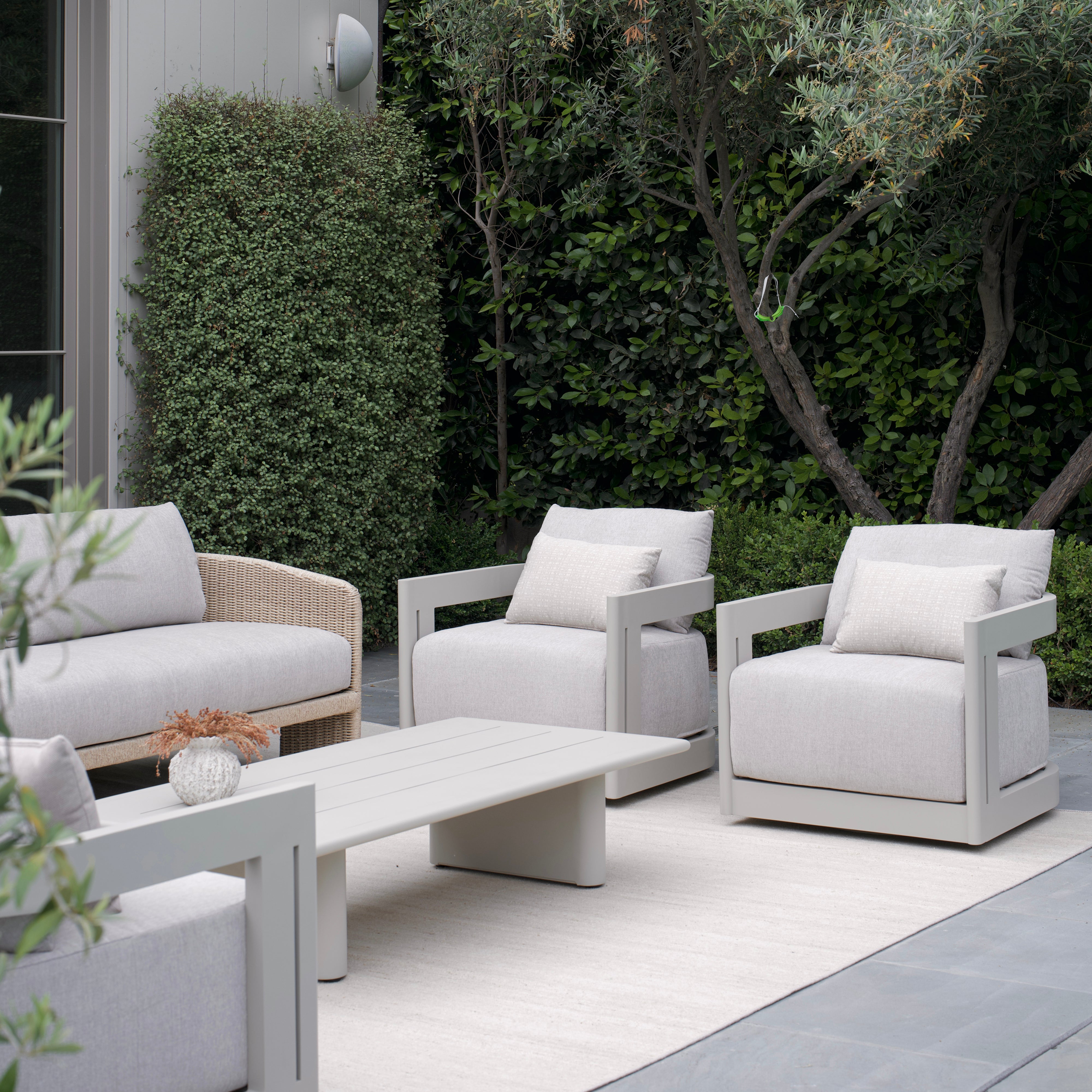
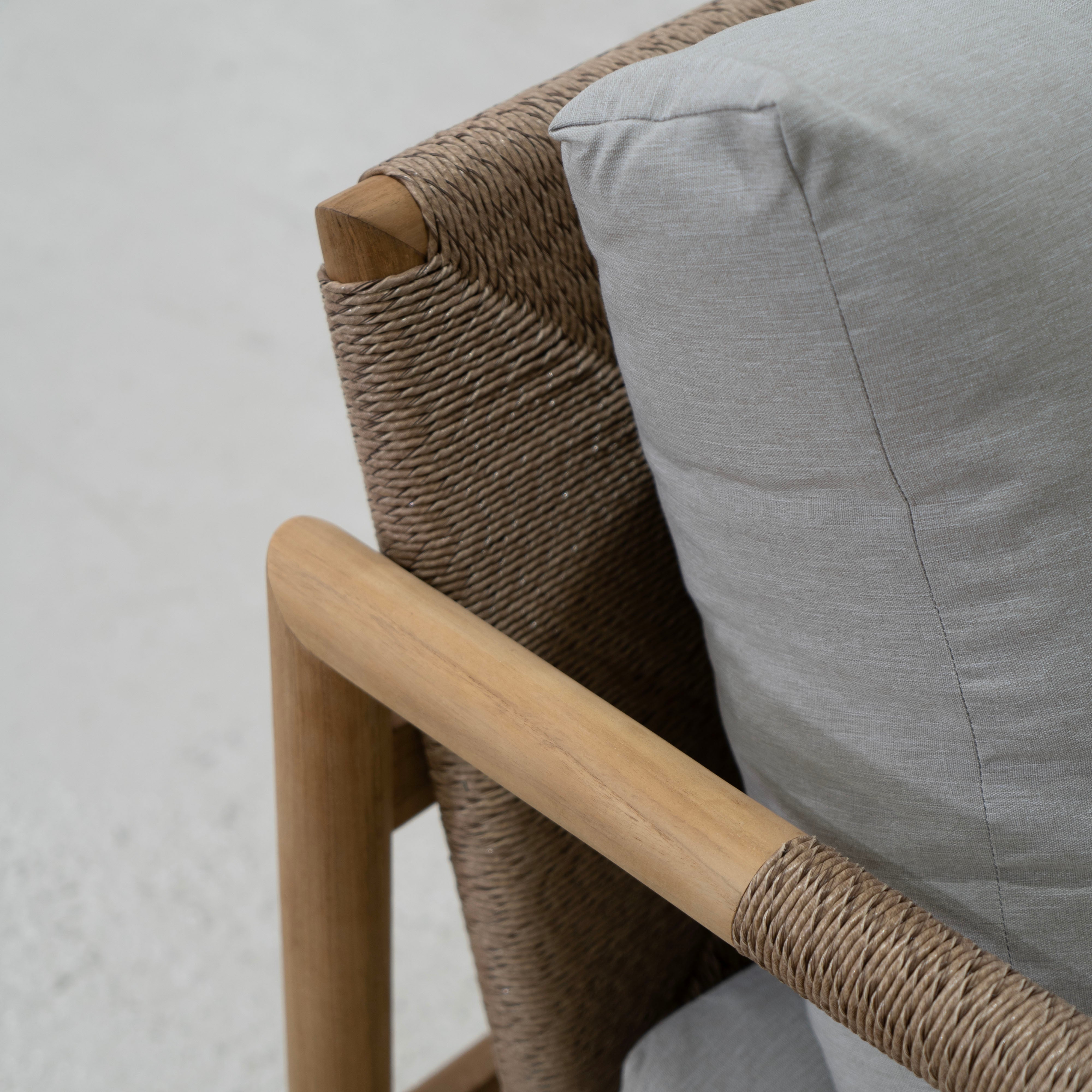
Our outdoor pieces are designed to withstand the elements, but like all natural materials, they benefit from a bit of seasonal care and attention. Following these guidelines will help extend the life and appearance of your outdoor furniture.
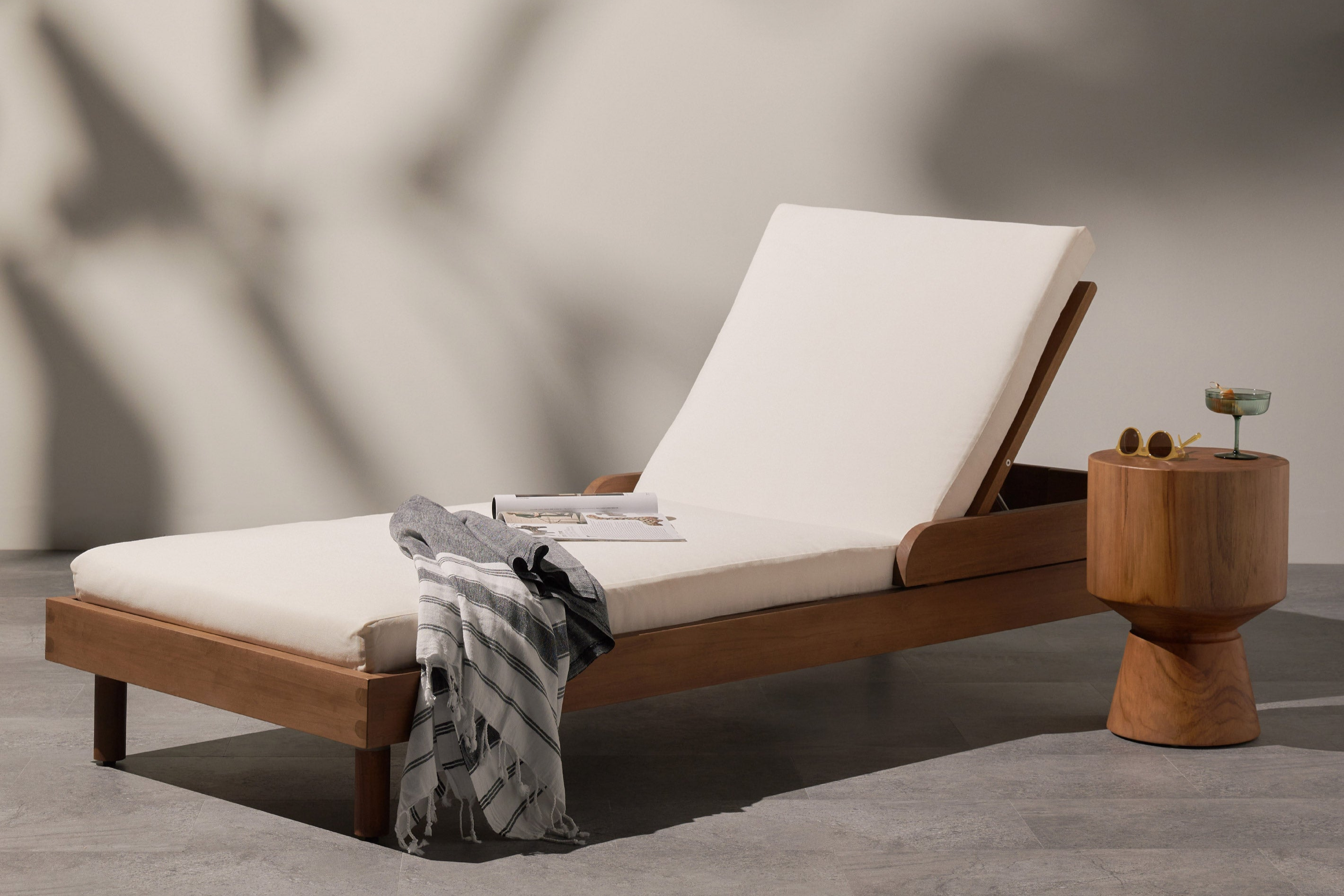
General Outdoor Furniture Care
Cover When Not in Use
We always recommend covering outdoor furniture when not in use and during inclement weather. This helps protect against moisture buildup, sun damage, and general wear over time.
Clean Regularly
Wipe down frames and surfaces with a soft cloth and mild detergent. Avoid harsh cleaners or abrasive tools that can damage finishes or fabrics.
Protect Against Mold & Mildew
Outdoor environments—especially shaded or humid areas—can create conditions for mold or mildew to form. To prevent this:
- Keep furniture clean and dry.
- Store cushions indoors when not in use for extended periods.
- Allow furniture to dry fully after rain or cleaning.
- Use a mild soap or white vinegar solution to spot-clean any mildew, rinsing thoroughly and drying in sunlight when possible.
Cushion Care
Outdoor cushions should be stored in a dry area when not in use. If they become wet, unzip the covers and allow both the inserts and covers to dry completely before reassembling. Occasional fluffing helps maintain loft and shape.
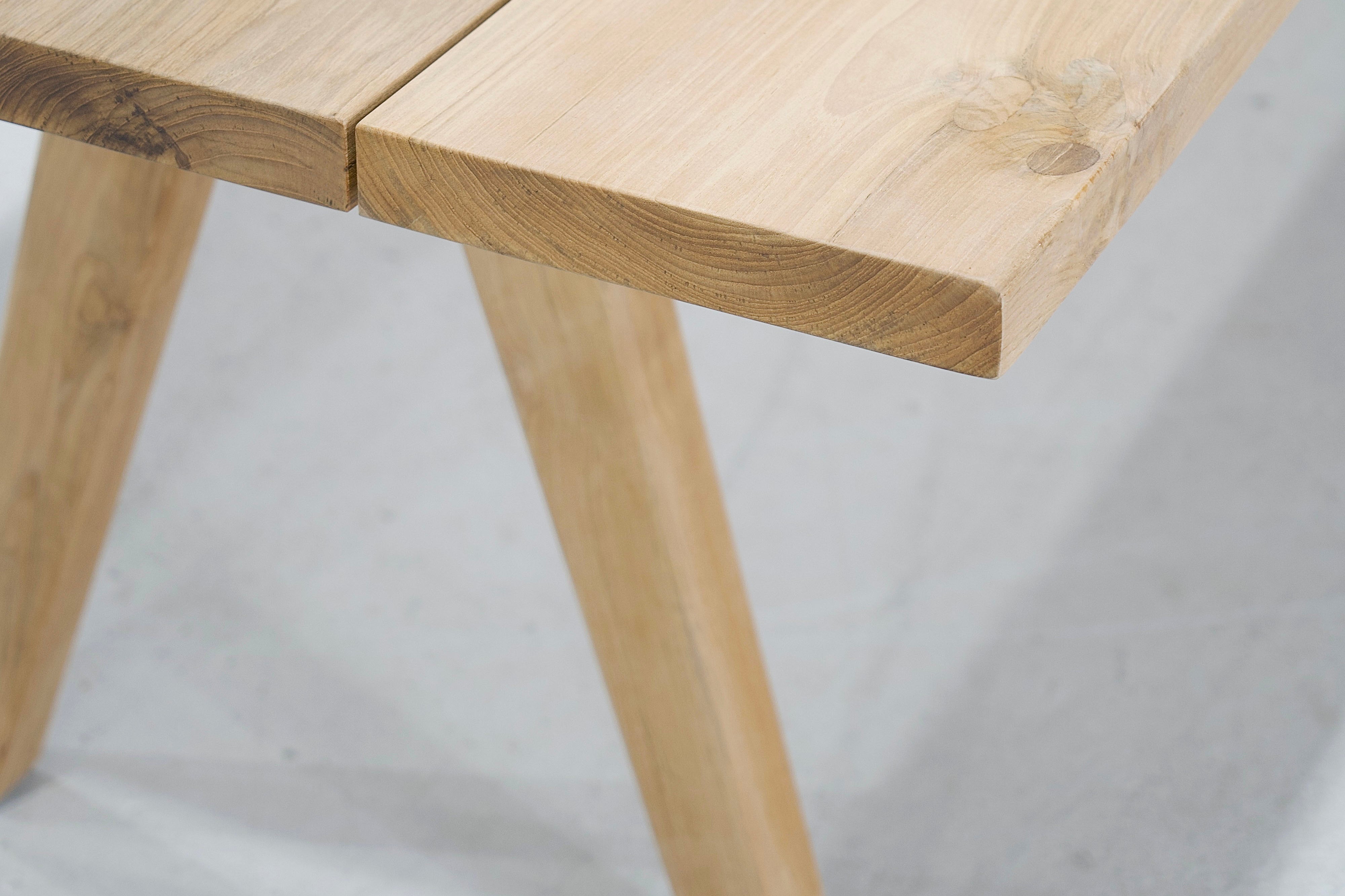
Teak Furniture
Teak is a naturally durable hardwood ideal for outdoor use, but it does undergo some changes as it weathers.
Natural Movement
Teak is kiln-dried to minimize movement, but it may still expand and contract slightly with changes in temperature and humidity. This is a natural characteristic and not considered a defect.
Oil Bleeding
New teak contains natural oils that may rise to the surface and “bleed” during the first few months, especially with exposure to rain. This can stain light-colored fabrics and porous surfaces:
- Avoid placing new teak on light stone or tile until the bleeding subsides (usually 2–3 months).
- Avoid using light-colored cushions or covers directly on new teak during this period.
Cleaning
- Clean with water and mild detergent using a soft cloth or brush.
- Use a Teak & Upholstery Cleaner once a year for a deeper clean.
- Never use bleach, stiff brushes, pressure washers, or steel wool.
- Always clean in the direction of the grain.
Aging & Weathering
Over time, teak will develop a silvery-grey patina. This is a natural part of the weathering process and does not affect performance. If you prefer to maintain the original honey tone, you may use a teak protector or sealer designed specifically for outdoor use.
Pest Note
Occasionally, wasps may target weathered teak to strip the surface for nest-building. This is a seasonal issue with no effective prevention, and not considered a flaw in the material.


